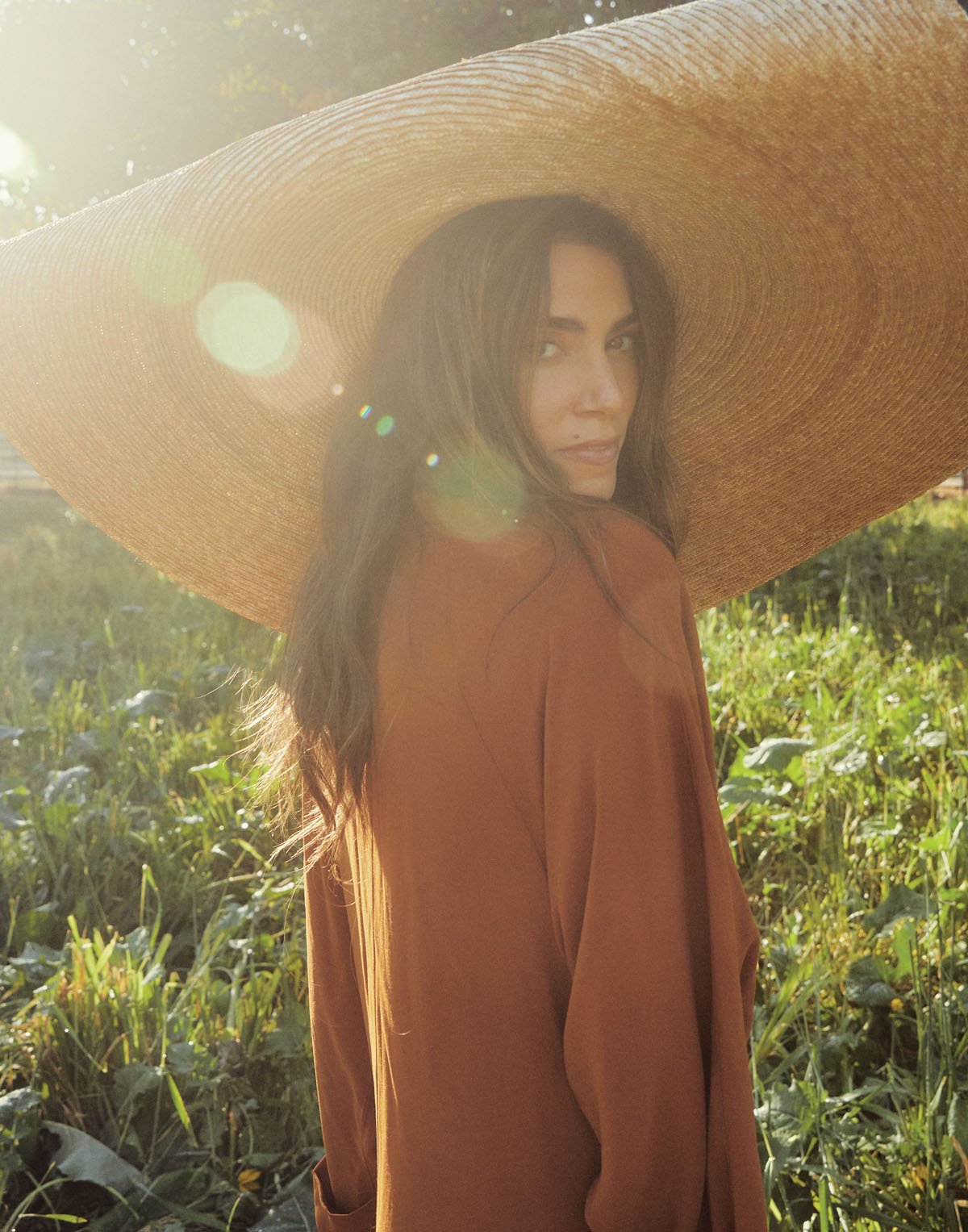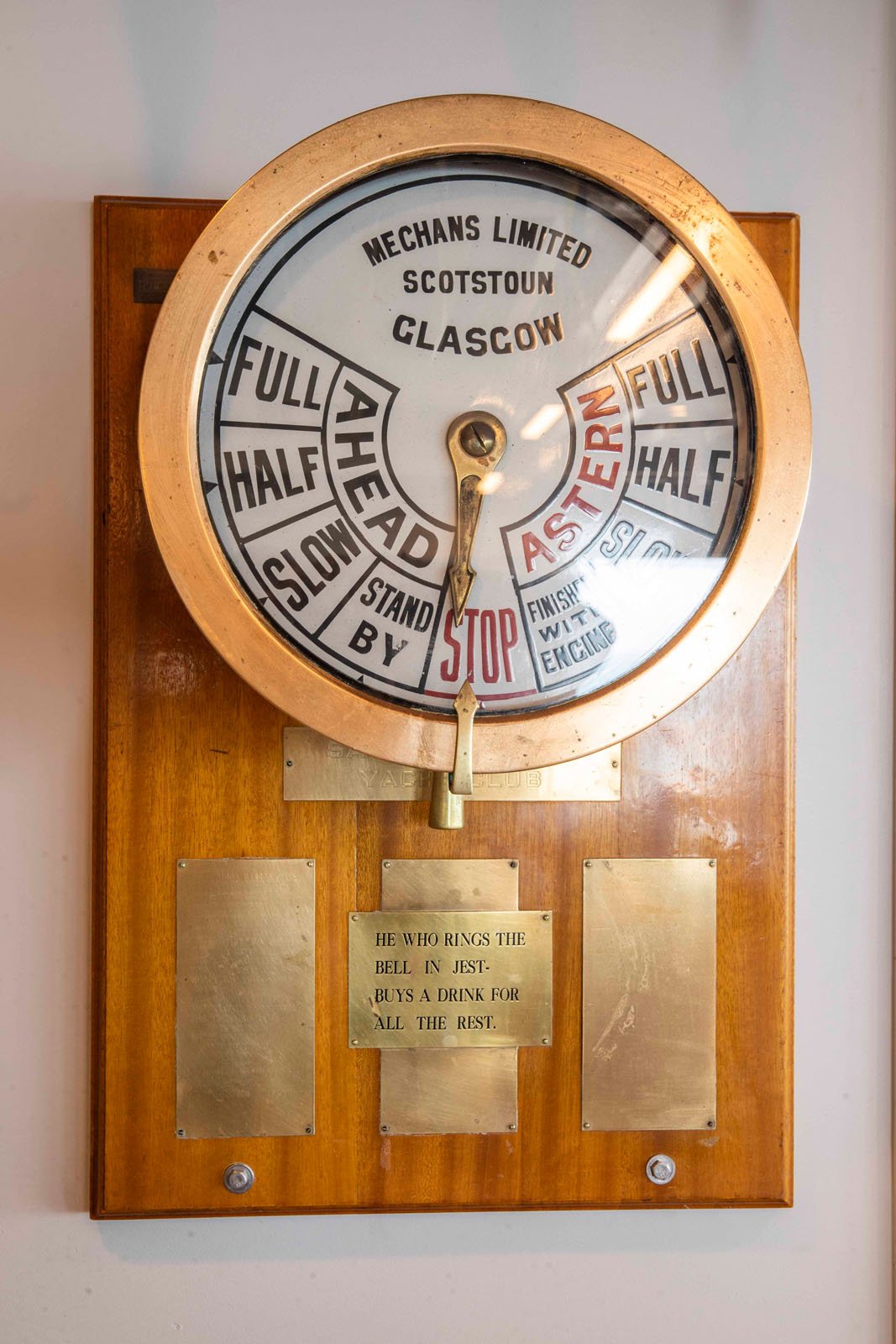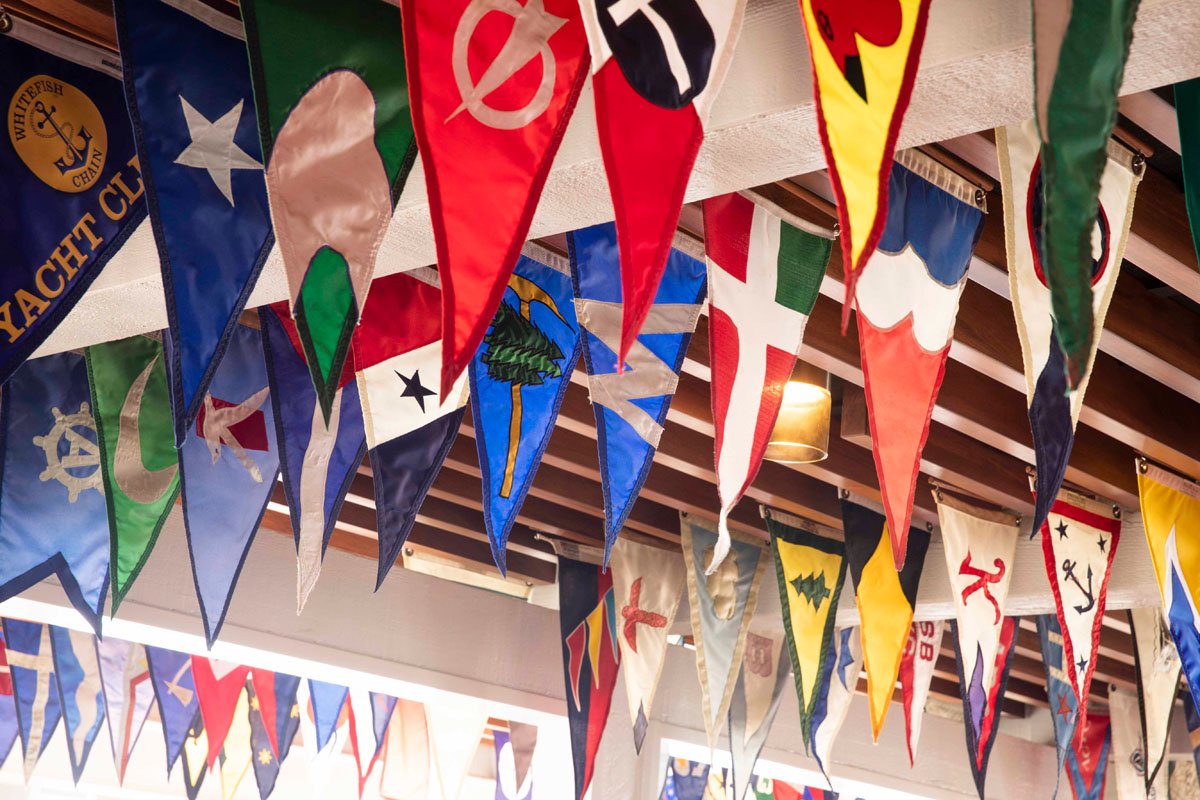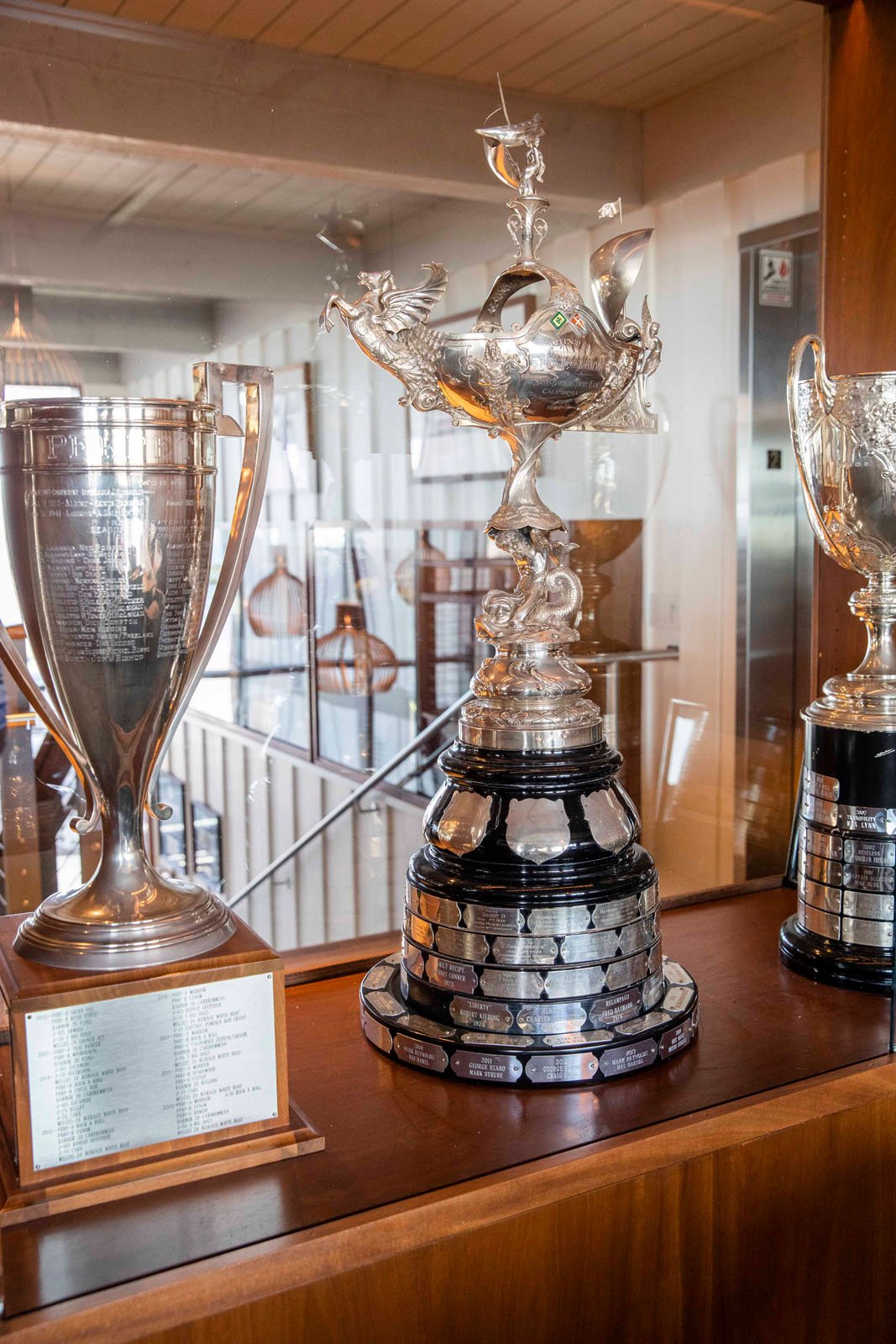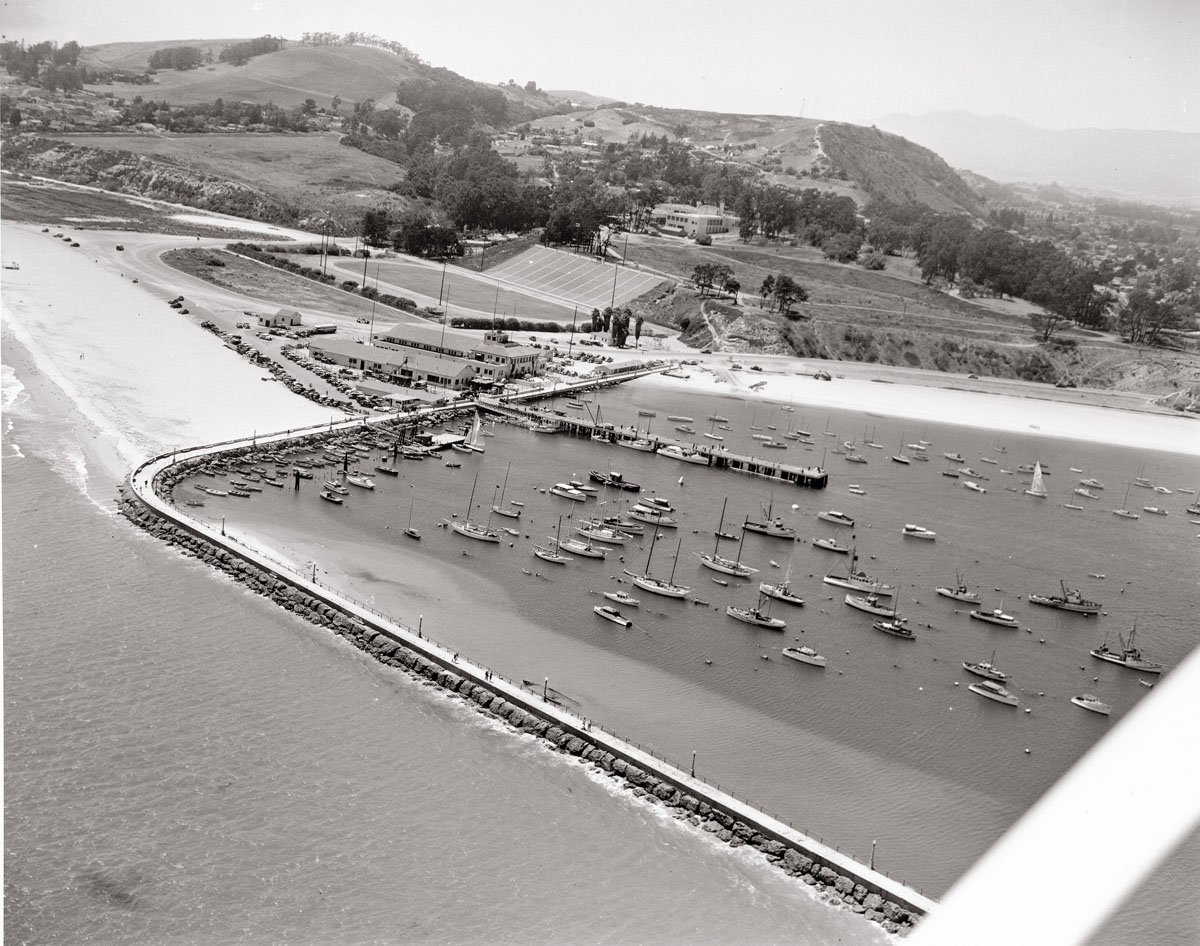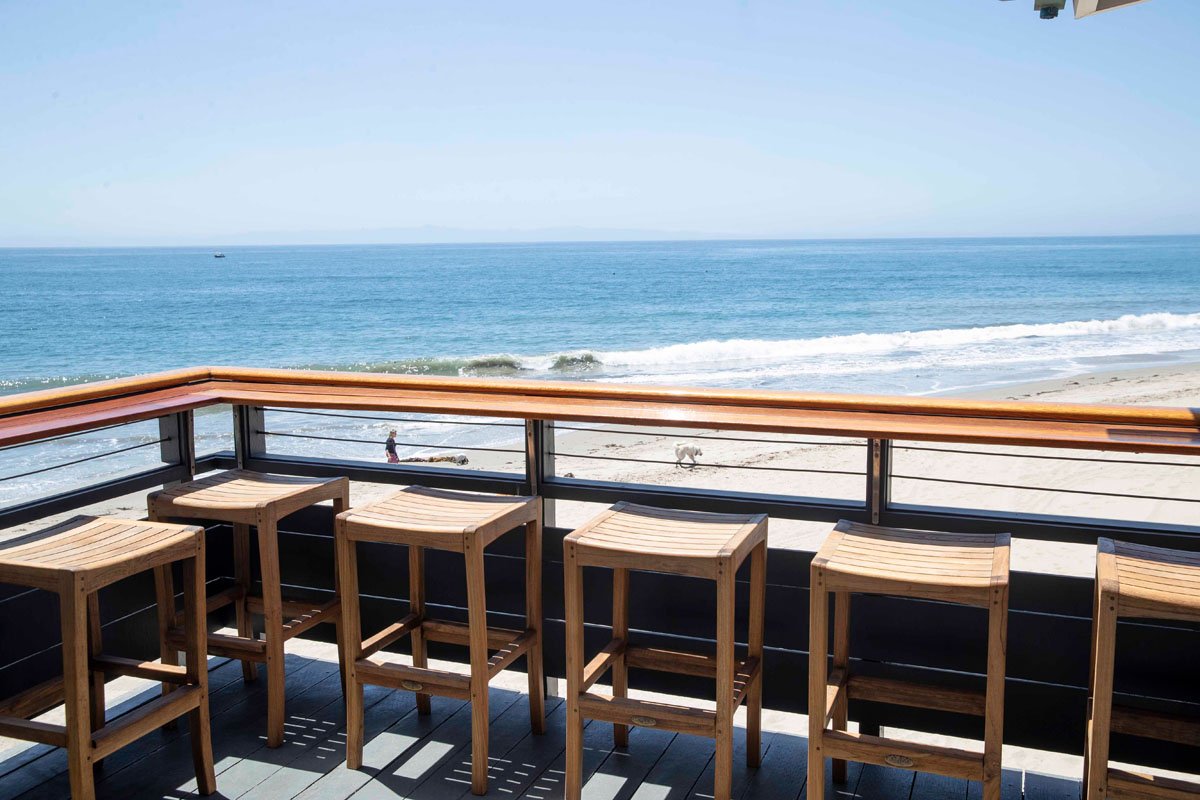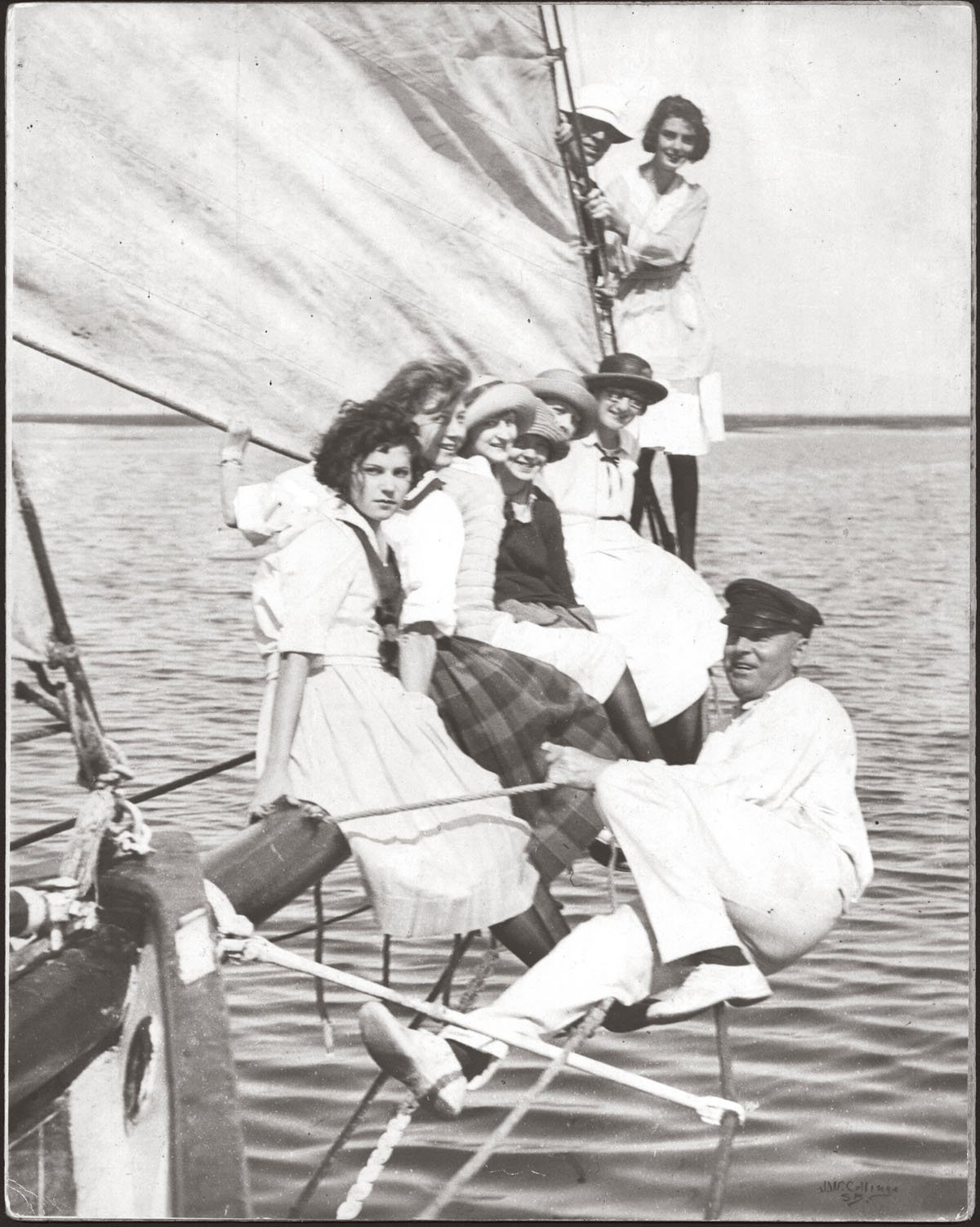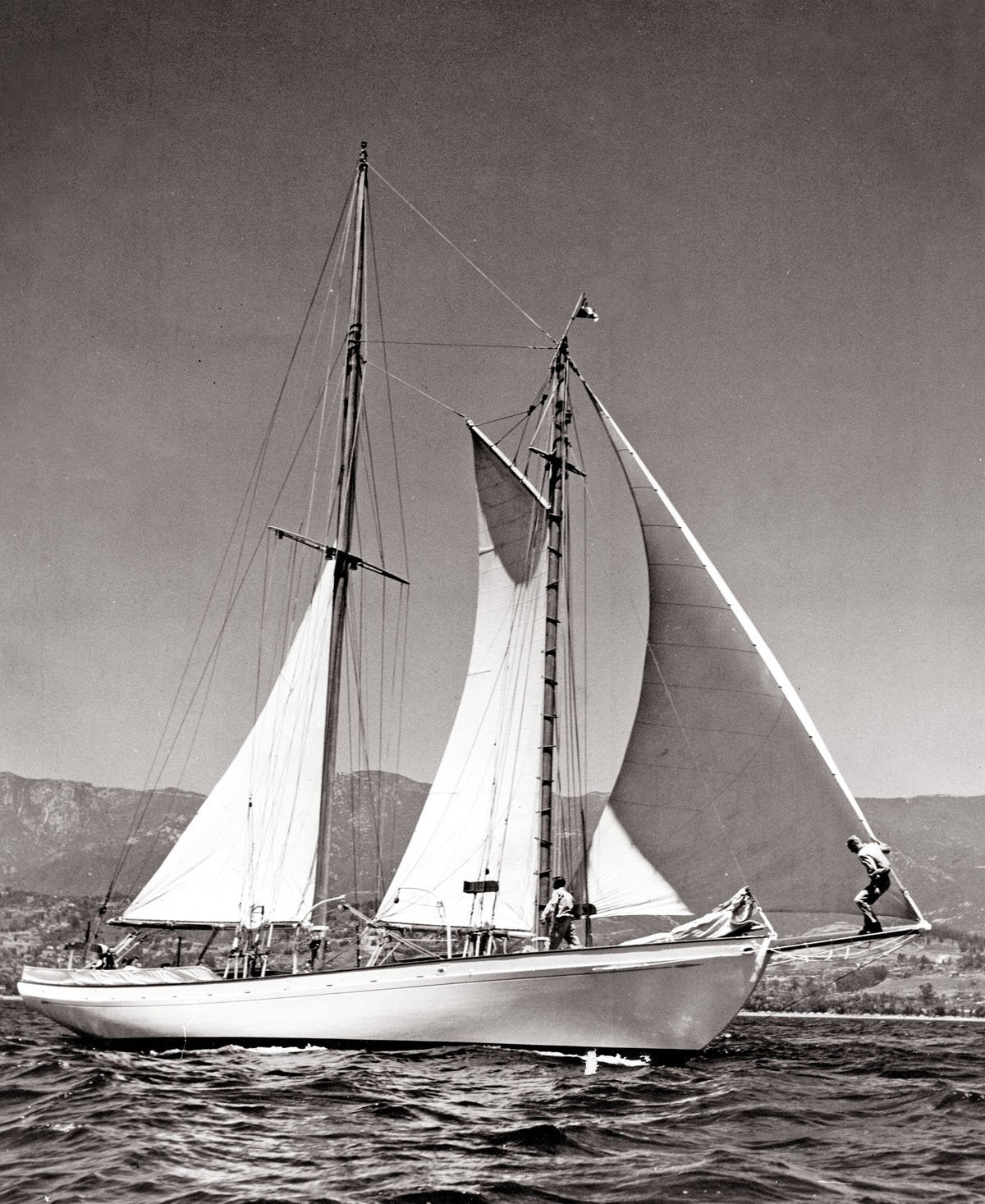Game Day
Generations of polo players and ponies carry on the traditions of more than 100 years at the Santa Barbara Polo Club
Generations of polo players and ponies carry on the traditions of more than 100 years at the Santa Barbara Polo Club
By Gina Tolleson
Photographs by Lindsey Ross
The Sport of Kings
There is probably not a more recognizable face in the pop culture of polo than the true ambassador of the sport, Nacho Figueras. From the pampas of his native Argentina, Nacho has assumed diplomat status, crisscrossing the globe with the Ralph Lauren brand and as a competitive, charitable player for the gentleman’s game. Now he returns to Santa Barbara with his heir apparent sons, Hilario, 25, 5 goals, and Artemio, 15, 2 goals. “There are few things more meaningful than watching my sons fall in love with the sport that has shaped my life,” he says. “Whether I’m playing alongside them or just being there to support them as they begin their own journeys, it’s something I cherish deeply.”
Polo Wife, Happy Life
“Being here as a family during the polo season is really special,” says Delfina Blaquier, wife, mother, and CEO of the Figueras family. “The club is more than 100 years old, and you can feel the history in the air—it’s alive. The boys love the energy, the matches are nonstop, and when we’re not at the fields, we’re surfing, hiking, exploring the area…it’s a rhythm that feels like summer.”
“Polo is the only sport that is age and gender agnostic that combines man and horse. It is heaped in strategy and discipline as all players play offense and defense. Our horses are our professional sports team. The polo field is the great equalizer.”
Father and Sons, Inc.
If there were a local Yellowstone, Klentner Ranch would be our western star. With private barns and stables adjacent to the club, Carpinteria’s own Justin Klentner—with sons Jake, 25, and Luke, 24—are forces to be reckoned with on and off the field, charmingly so. “Playing with my sons is always the dream I had when I started to play polo, and it’s better in reality then I could have ever imagined,” says Justin. “It keeps us close as a family, and we have to fight over who gets what horse, which keeps it interesting. I hope I can play until I am 90.”
Sibling Rivalry
Mia and Jesse Bray are a familiar brother-sister duo, now calling Santa Barbara home between playing in Florida, Argentina, and the Coachella Valley. “Our competitiveness is strong, so it’s always better to play with my brother than against him,” says Mia. “He definitely pushes me harder on the field than anyone else, so I’ve learned to be a tough polo player and have thick skin.” Jesse, at 32 and one of the highest-ranking American players at 7 goals, hasn’t missed a summer season here in more than 15 years. “I met my wife, Hayley, here at the club, and my daughter was born in Santa Barbara. This is home.”
The Patrona
Alecia Seidler, one of a few female players and leader of Quite on Z team, is a fiery Brazilian who loves to play defense and has spent more than 10 years dedicated to the sport. “It feels great to be back playing in Santa Barbara. I love this team. The guys are so passionate and kind, and they want to win! As Ayrton Senna, the great Formula One driver, said, ‘We are competing to win. If you no longer go for a gap, you are no longer competing.’”
The OG
Henry Walker, CEO of Farmers and Merchants Bank, has been playing for 47 years at the SBPRC (where he is also the president and a trustee), representing the longest continuous playing family at the club since 1953. “It is an adrenaline sport that combines the contact of hockey, the danger of NASCAR, and horsemanship, and wraps it all up onto the field.”
“Sharing the field together with Hope is both empowering and deeply personal—it’s about sisterhood, grit, and raising the bar for what’s possible.”
One to Watch
Returning for her second season here, 22-year-old Hope Arellano is a highly ranked 10-goal women’s player and recent US Open champion. She’s no stranger to the world of global polo, having been raised on the circuit with her father, Julio, and brothers, Agustin and Lucas—all of whom are professional players. Hope is breaking down barriers for women in the sport and has the dream opportunity to pair up with one of her biggest supporters in Sarah Siegel-Magness, her 90210 team sponsor. “Playing alongside Sarah is very special. She works so incredibly hard to incorporate women on her teams. She is a true ambassador for the sport.”
The Powerhouse
Sarah Siegel-Magness, patron of 90210 team, is a relentless force in the saddle and a mighty mentor to many. She champions safety and camaraderie on the field, settles for nothing but the best (she will be playing with legendary 10-goaler Adolfo Cambiaso in the high-goal season starting in July), and, most of all, leads by example for the growth of the sport, especially for women. “Our presence here is more than symbolic—it’s a call to continue creating space for female athletes at all levels. We’re proud to be part of that shift and to show younger generations that this path exists and can thrive.”
Farm to Field
“As a third-generation polo player, it’s amazing to continue the tradition,” says Will Busch, 2-goal player for Folded Hills, named after his family’s farmstead and winery in the Santa Ynez Valley. Raised in Santa Barbara, he descends from a long line of horsemen. “I learned everything I know about polo from my grandfather August Busch and my father, Andrew Busch.”
All Grown Up
“Playing at the club is like being at home for me,” says second-generation player Grant Palmer. “I grew up watching polo and running around these grounds all day.” Swinging a mallet since the age of four, Grant, 23, feels lucky to follow in his father’s footsteps and continue the Antelope Polo Team, which he’s very proud of. “We have always maintained a similar culture in the organization, which stems from the love and enjoyment of the sport. Whether we win or lose, there’s always a great feeling on and off the field. Of course, none of it would be possible without the hardworking grooms making sure the horses are in top shape. We owe all our success to them.”
See the story in our digital edition
Bayan Surf Club
Step Inside DJ Javiers’s world where graphic designer meets artist meets surfer
Step Inside DJ Javiers’s World Where Graphic Designer Meets Artist Meets Surfer
Written by John Connelly
Photographs by Will Adler
The graphic designer, artist, and muralist DJ Javier is a true hometown success story, a Santa Barbara phenomenon whose work combines the immediacy of street art with a colorful beach-centric surf vibe that has its own bold language, palette, and character. His infectious collection of cartoonish figures, bright colors, and catchy phrasing project a vibrant realness that also communicates an unapologetic embrace of his Filipino legacy and first-generation status. This winning combination of Southern California coastal cool and earnest, raw energy has led to major brand collaborations with big-name brands like Adobe, Shake Shack, Netflix, and the Los Angeles Rams. His colorful Funk Zone studio is a few blocks from the beach and filled with posters, art books, and product collaborations, such as a Star Wars line of socks with the apparel company Stance and custom sneakers by Vans. Bayan Surf Club is the name of this multidisciplinary studio, which intentionally blurs the lines of art and design. For Javier, it’s where “graphic designer meets semipro doodler, meets art director, meets surf rat.”
Bayan Surf Club, a multidisciplinary studio near East Beach, is filled with posters, art books, apparel, and products. The studio has worked on major collaborations with big names like Adobe, Stance, Shake Shack, Vans, Netflix, and the Los Angeles Rams.
You can find Javier’s artwork and murals scattered throughout Santa Barbara at businesses like Lighthouse Skate Shop, Your Choice Thai Restaurant, Dune Coffee Roasters, and Haven Barber & Shop. He attributes his success to growing up in this city and to adopting his father’s work ethic.
“In his short career, Javier has fought against the lack of diversity, affordability, and accessibility in surf and ocean culture.”
“My father’s story leads to my story,” Javier says. It was his dad, Oliver, who brought the family to Santa Barbara after a seven-year stint working in construction in Saudi Arabia, where he would see his family only once a year. A subsequent job offer in the United States led to a brief stop in Florida and then a transfer to Santa Barbara, where he started his own construction business and never looked back. Javier says he and his father are very stubborn. Oliver had a persistent drive to succeed with his family in the U.S., noting, “Nothing will be given to you; you will have to earn it.” Javier had no Plan B when he decided to forge ahead with his career as a designer and artist. He had tried drafting as a student at Dos Pueblos High School, but his lack of passion for the subject led to his embrace of design and a degree in the subject from Azusa Pacific University in 2015.
Ten years later, with numerous projects, exhibitions, and collaborations under his belt, Javier has planned his most ambitious exhibition to date, a solo show at the Museum of Contemporary Art Santa Barbara (MCASB). The title, San Milano Drive, refers to the El Encanto Heights family home in Goleta, where Javier grew up with his three sisters, and which embodies his Filipino American success story. The place represents a convergence of cultural perspectives and the intersection of traditional Filipino cultural practices and core values of camaraderie, hospitality, and faith with a strong emphasis on family bonds and community (known as bayanihan in the Philippines).
Javier is a self-described rap music aficionado, and San Milano Drive is also where he first heard 50 Cent, Snoop Dogg, and Dr. Dre, whose music influenced his personal and creative style. Javier also cites Saturday morning cartoons and skate and surf culture as inspirations, as well as artists David Flores, Cody Hudson, and Barry McGee. It was McGee’s 2018 solo exhibition at MCASB that spurred the young artist to move beyond thinking such an opportunity might never be within his reach.
“My goal is to create work and embody the person/artist/surfer that I wanted to see growing up, hopefully inspiring the young version of me out there to get in the water and do the same.”
At MCASB, Javier will be unveiling numerous large-scale sculptural works, a survey of current and new paintings, interactive elements, and a retrospective of T-shirts he has designed for both himself and clients. One of the focal points of the show will be a custom “Nipa Hut”—a communal gathering space for family and friends found in most homes in the Philippines—that references the bayanihan custom of helping neighbors relocate, and “The San Milano Sari Sari,” Javier’s take on the ubiquitous tiny Filipino neighborhood market. It will feature local artists and creative friends in his network, along with his personal brands and special MCASB collaborative merchandise. Other exhibition highlights will be a tricked-out customized tricycle (a popular form of public transportation in the Philippines), designed and fabricated by Alex Guerena of the Boom Boom Bike Room, and the “Videoke Machine,” a reimagined karaoke machine funded by the David Bermant Foundation. A series of new, dynamic murals will tie everything together.
In his short career, Javier has fought against the lack of diversity, affordability, and accessibility in surf and ocean culture, and has supported local nonprofits like the Sea League, which encourages youth from all backgrounds to engage in ocean stewardship. He came to surfing relatively late, learning to swim at 17 and to surf at 18. “I never had interest in surfing growing up,” he says, “because I didn’t see many people who looked like me or had the same interests or style as me in the lineup.” But the sport’s influence on him and his work is indelible.
While Javier now works with major national brands and has public projects across the country, his local connections provide special satisfactions. He truly believes in empowering his community: “My goal is to create work and embody the person/artist/surfer that I wanted to see growing up, hopefully inspiring the young version of me out there to get in the water and do the same.” bayansurf.club
See the story in our digital edition
Wave Riders
Collector Wayne Babcock’s quest for totemic surfboards
Collector Wayne Babcock’s quest for totemic surfboards
Written by Christian Beamish
Photographs by Dewey Nicks
Surfboards embody the cultural mores of their time; the chemical composites of today no less than the great olos of Hawaiian chieftains, selected from sacred forests. But what thread links the cultures of the Polynesian voyagers and the surfers of today? As the holder of one of the preeminent collections of surfboards—a grouping that includes boards that date to Hawaiian royalty and contemporary world champions—Wayne Babcock is uniquely positioned to answer that question. “It’s all connected,” he says, by “the same beautiful act of riding a wave and playing in nature.”
Born in Los Angeles in 1958, Babcock describes his childhood wonderment at the butterflies and flowers that, for him, represented the real magic of the universe. This notion of magic, or at least of a grander scheme at work, continues to inform his view of the world. “It’s funny how the universe works with me,” he says. The historic surfboards that are his passion seem to come to him, he adds. “They manifest.”
Randy Rarick, who runs classic surfboard auctions and does restoration work on boards, says, “Surf aficionados and collectors are a rare breed. Of this select group, probably the most knowledgeable and prolific collector is Wayne Babcock. He has, arguably, the best collection in the United States, if not the world.”
““Surf aficionados and collectors are a rare breed. Probably the most knowledgeable and prolific collector is Wayne Babcock. He has, arguably, the best collection in the U.S., if not the world.”
But it’s not as though Babcock sits around waiting for the boards to manifest. He’s been a collector for a long time. His mother was a collector, and when he was young she took him to estate sales around Los Angeles, helping him develop an eye for the valuable and unusual. Babcock held a spot at the Rose Bowl Flea Market for years, adding to his trove of 20th-century ephemera, such as sunglasses, lighters, and pocket knives.
The surfboards are his heart’s delight, but Babcock pays the bills running Angels Antiques in Carpinteria, where for 40 years he has been the go-to guy for anyone looking for that special midcentury object—a chair, table, teapot, or tchotchke. Hawaiiana is another specialty; he has an encyclopedic knowledge of Hawaiian slack-key guitar players.
In his flea market days, Babcock displayed a placard designed like a wanted poster from the Wild West. But instead of desperados, he was after vintage surfboards: “Top dollar paid!” read a graphic explosion. Rather than provide contact information on the poster, he waited for people to talk with him directly so he could gauge whether a lead was worth following.
The older boards in the collection speak of summers long passed yet suggest the timeless joy of getting into the surf and simply riding back to shore. George Greenough, originally of Montecito but long ensconced among the glistening forests and point surf of Byron Bay in New South Wales, Australia, is surfing’s patron saint of high-performance design. His experiments with kneeboards led to the shortboard revolution in 1967, forever altering the way surfers approach the waves. His windsurfing boards (shown lower right) incorporate highly advanced foils for maximum hydrodynamic efficiency.
During one such conversation, a woman mentioned that her husband had a very old board. So began a series of phone calls that Babcock likens to an affair, in which she quietly kept him apprised of her spouse’s willingness to let the board go. Her husband had bought it from another Angeleno who had acquired the board in the 1930s in Waikiki, the cradle of contemporary surfing. Waikiki was the stomping grounds of a cadre of Hawaiian watermen known as the Beach Boys, among them the greatest of all surfers, Duke Kahanamoku.
It was not Duke’s board, but the man in the 1930s had asked the Beach Boys—whom he presumably met through surf lessons—if he could buy the oldest surfboard they knew of. And it is the thought of distant generations of Hawaiian grandfathers riding this surfboard that fires Babcock’s imagination.
His oldest boards (including the 1930s-era board) were shaped by master crafters who obtained the characteristics they wanted in their designs through concaves and chines, well-shaped rails, and pure, functional outlines.
Ultimately, perhaps, it is the refinement of these earliest boards that connects the surfing and seafaring technologies of ancient Polynesia to those of the modern era. Babcock’s collection comprises some 400 surfboards, many representing important shaping developments: Joe Quigg’s Malibu Chip design sits on a rack above a Bob Simmons planing hull; there are Renny Yater’s era-defining noseriders and his California guns of the 1970s. Dick Brewer big-wave spears share space with George Greenough’s high-speed windsurfing boards. Al Merrick’s shortboard precision and John Bradbury single fins attest to the lineage of Santa Barbara surfing.
“Carpinteria needs a surf museum,” Babcock says. His wave-riding talismans, though well- catalogued and properly stored in a temperature-controlled container on a private ranch in Carpinteria, are not available for public viewing. He envisions a venue where these boards can inform, inspire, and help people connect to the splendor of surfing and its long history in the Pacific and around the world.
See the story in our digital edition
The Magic of Zaca Lake
A place once thought to be a portal still has the power to transport
A place once thought to be a portal still has the power to transport
Written by Anna Ferguson-Sparks
Photographs by Blake Bronstad and Maia Hinton
Zaca Lake lures guests with its mysticism, its otherworldly energy, and its varied natural history. Once rumored to be bottomless, the emerald-toned body of water—which is the only naturally occurring spring-fed lake in Santa Barbara County—was formed approximately 10,000 years ago by a landslide that caused a fissure in the earth. Chumash legend held that Zaca Lake could essentially siphon swimmers to other regions of the Santa Ynez Valley and beyond. Today the lake is the centerpiece of a 320-acre resort that remains secluded, spiritual, and stylish.
“The legendary lake sits at an altitude of about 2,400 feet above sea level.”
Early one spring morning, we bounced along the nearly seven-mile drive from Foxen Canyon Road to the lake. After working our way uphill, through a final series of corkscrew turns, and then back down, we were rewarded by the sight of a bald eagle taking flight over a marshy pool of water, Zaca Lake’s seasonal overflow. One of several eagles that have been spotted on the property, the creature seemed symbolic of the rarity of this body of water and the land we were about to explore.
We would see the bird again from the dock that juts out in front of the 16 restored and redesigned cabins that line the lake’s northern shore. Towering redwoods planted in the late 1940s shade those cabins, and pines blanket the mountain range on the far side of the lake, at an altitude of about 2,400 feet above sea level. It is hard to remember that this spot is less than an hour from Santa Barbara and just 10 minutes from downtown Los Olivos, in Santa Ynez Valley’s wine country.
Zaca Lake is being preserved as a hidden natural oasis functioning as a bespoke group guest ranch, a role it has played for more than 100 years. The property was in sore need of repair and maintenance when it was acquired by the current partners, whose goal is to protect, preserve, and respect the history of the land and the lake. Water used for the property is pulled from its springs; solar panels supply electricity. The new stewards aim to maintain the land’s natural resources while they also share it with locals and visitors through customizable, rustic, elevated experiences that highlight the place’s magic.
The original wood cabins, which were built in the 1940s and have been restored in the camp vernacular, are available for private events and as part of property buyouts. There are fireplaces in the sleeping areas, and the furnishings are designed with luxe fabrics that play well with rough-edge limestone vanity tops, glass-enclosed showers, and flagstone bath and patio floors. Wooden trusses crisscross the cabin ceilings, and the floor is done in white oak.
Between the cabins and a three-bedroom, two-bathroom house, the property can sleep as many as 42 guests, plus staff. The Barn, also an original structure, serves as a gathering place for guests, with its grand fireplace and billiard table, and an expansive deck that looks out toward the horse corral. The view also takes in The Dome, a focal point for a new series of events hosted by Santa Barbara–based PALMA Colectiva. Husband-and-wife founders Daniel Pozas and Meredith Markworth-Pollack had been searching for the right spot in the Santa Ynez region to hold retreats, and in April they started the Nature Within at Zaca Lake.
“When we first visited Zaca Lake, we sat with the spirit of the land,” says Markworth-Pollack. “We were inspired by the story of the property, beginning with the Chumash and having many iterations over the years of spiritual and well-being uses. We felt connected to the design and new aesthetics of the restored property and how the inherent beauty and grace of the land has been revitalized in an organic and respectful manner. We’re utilizing the retreat space and bringing healing and wellness for the community back to its most authentic use.”
Explaining the name of the retreat, Markworth-Pollack notes, “You feel so isolated here, with all of the elements of nature—wildness, beauty, extremes…they all reflect the nature within ourselves.”
PALMA Colectiva’s first three-day, two-night retreat included workshops and activations such as a cacao-and-sound ceremony with vibrational artist and healer Micah Sheiner, who also opened the weekend with a land-and-water blessing that honored the history of the land and its people.
“Zaca Lake is being preserved as a hidden natural oasis functioning as a bespoke group guest ranch.”
Inside Zaca Lake’s acoustically unique Dome, which was staged with custom EmmaRose Floral arrangements, guests attended a yoga flow session with Krista Fleming, followed by a silent tea ceremony with Morgann Francesca. Reiki and intuitive bodywork by Markworth-Pollack and Pozas complemented the meals curated by chef Natacha Stojanovic’s MIDI Foods, and a zero-proof beverage program sponsored by nonalcoholic Tilden Cocktails. To close the weekend, grief coach Amar Atma led retreat attendees in a “Funeral for Self,” effectively leading guests to decide which parts of themselves they could let go as they cycle through life.
PALMA Colectiva is planning a similar Zaca Lake retreat in November—expanded to four days and three nights, with attendees limited to 26 overnight guests—and will also host single-day social well-being retreats open to a greater number of people.
Historical images of Zaca Lake’s past lives, culled from a 1994 book on the subject, History of Zaca Lake.
Zaca Lake’s intimate commercial kitchen is used by chefs and catering crews brought in for retreats, private events, weddings, and corporate affairs. The original lakeside lodge, which has a larger kitchen facility, was damaged in a fire in 2015 but is being rebuilt.
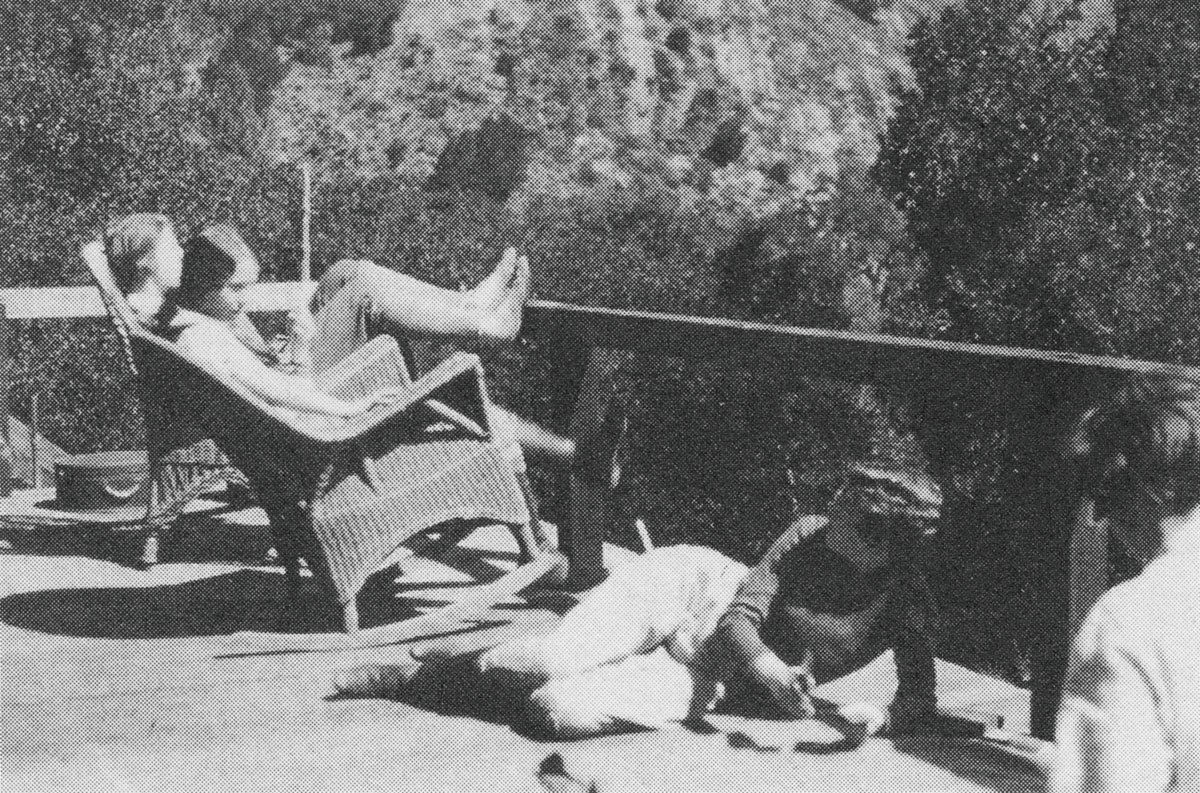
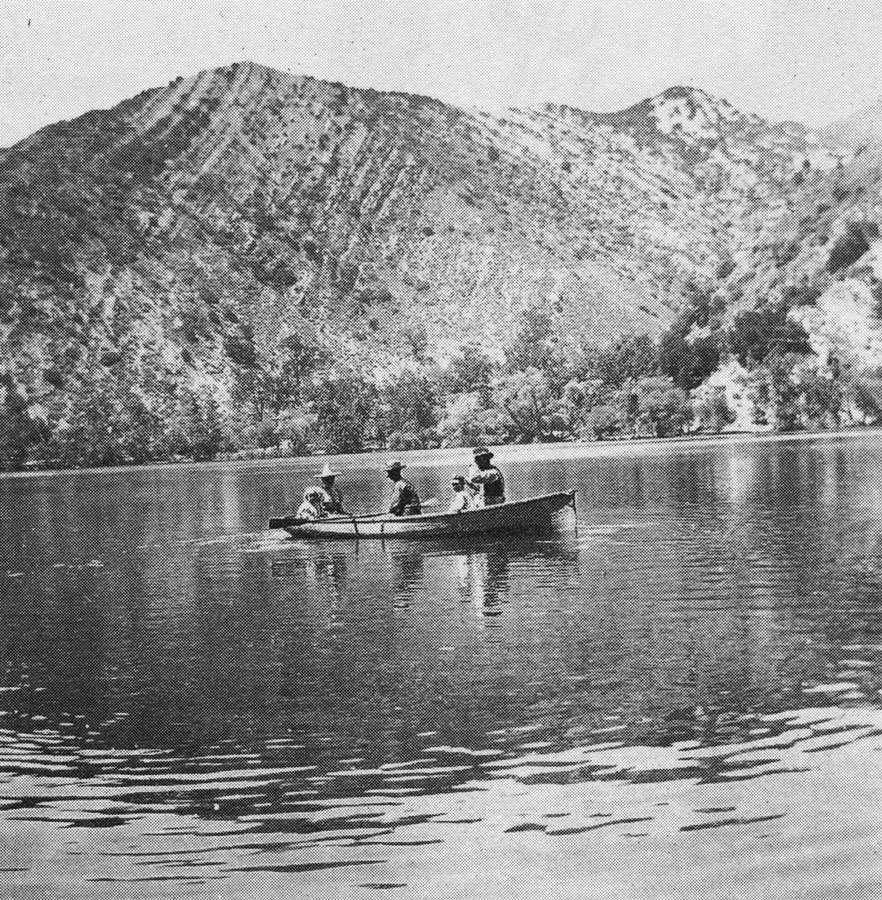
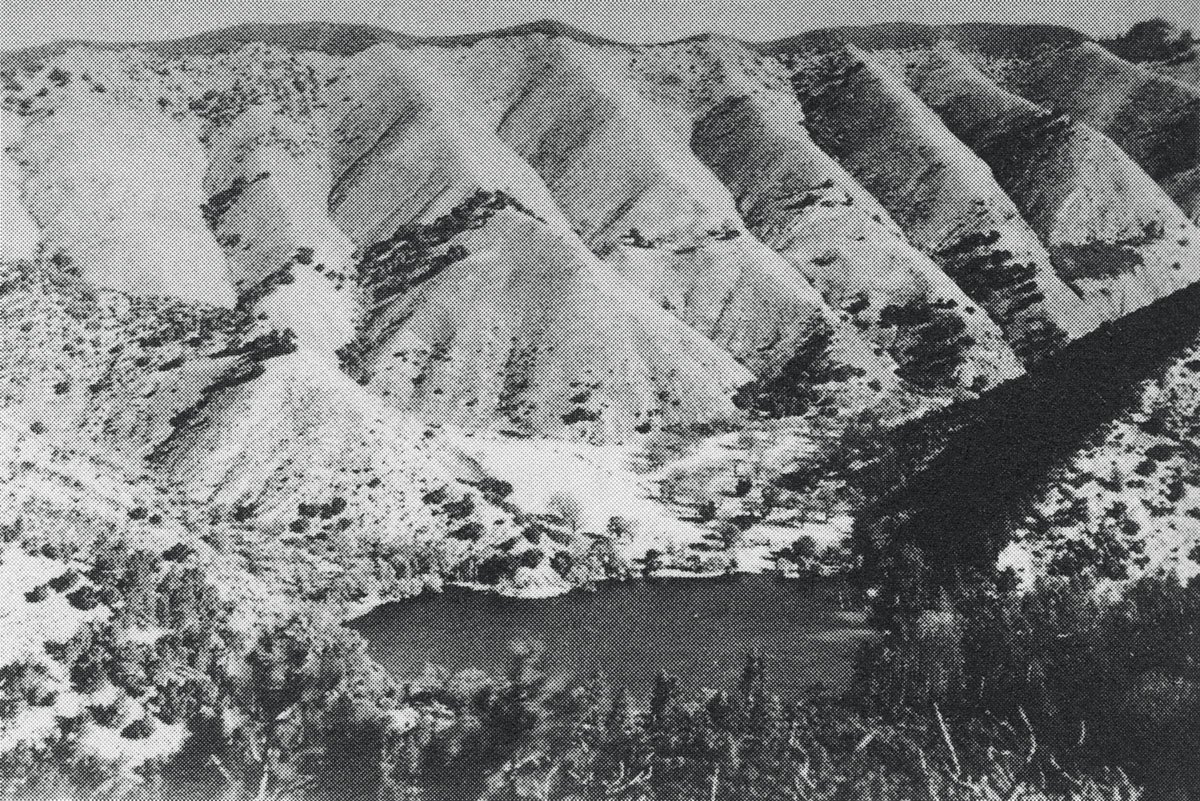
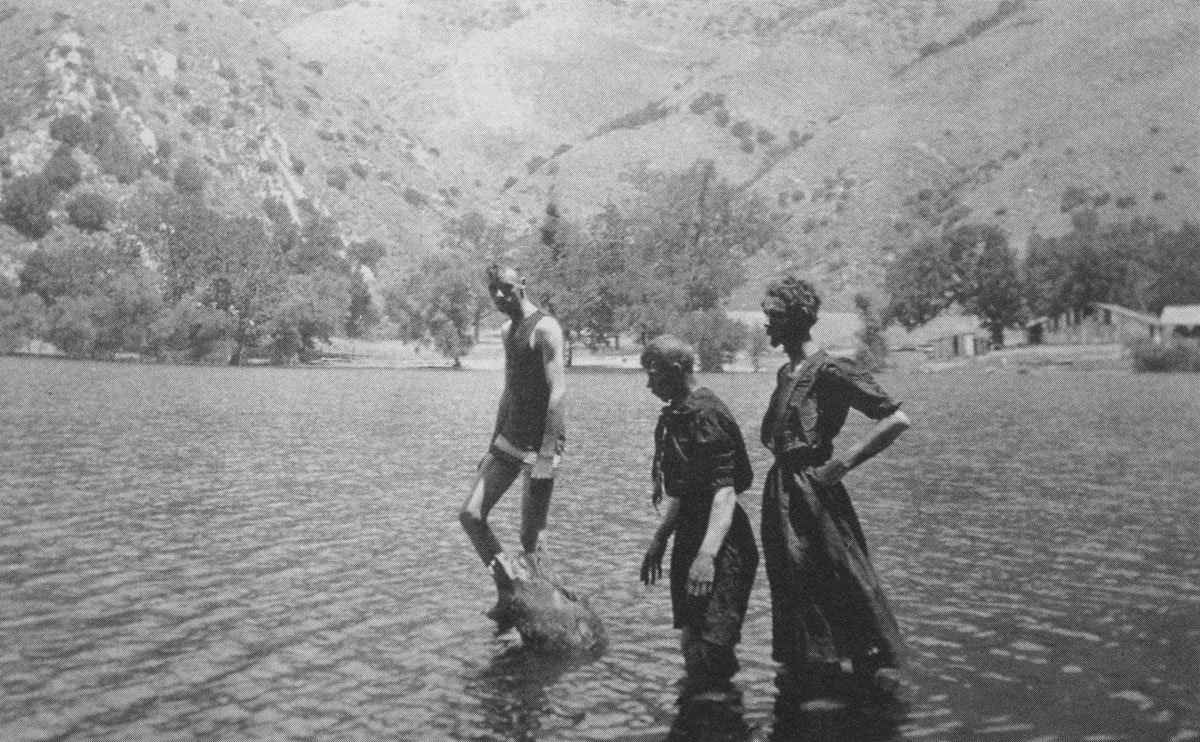
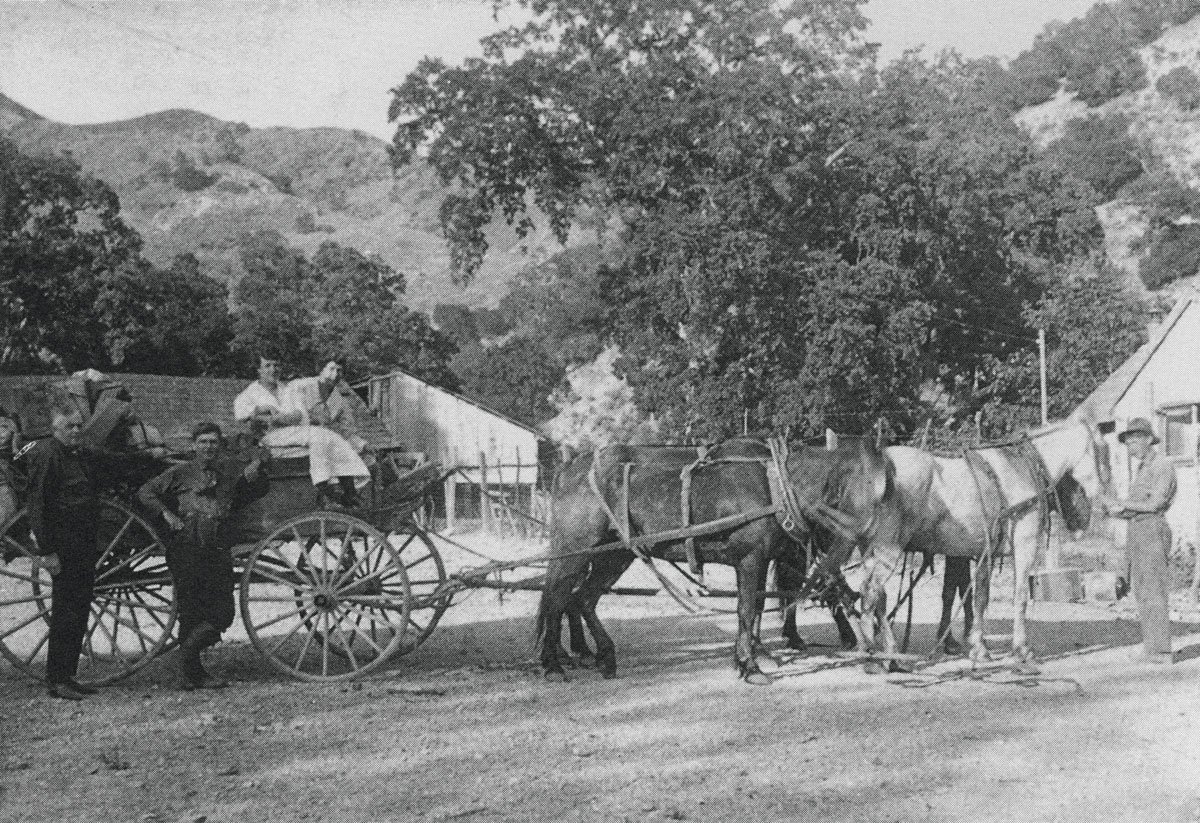
One of the most fabled elements of the property is its original outdoor kitchen and stone-paved barbecue area, the Alamo, which has “1939” carved into one of its keystones. Featuring two barbecue pits, a rotisserie, a massive fireplace, and a live-edge wooden bar, the structure is said to have been built for the storied Rancheros Visitadores, who used Zaca Lake as an encampment during their spring retreat.
Outdoors enthusiasts will revel in the range of activities available for guests at Zaca Lake, such as swimming, fishing, paddling, and rowing. Equestrian outfitters are on call for guided trail rides into the Santa Barbara backcountry, hiking and mountain biking trails line the ridges that ring the lake, and culinary adventurers can forage for edible gems like chanterelles.
See the story in our digital edition
An Alfresco Evening
Goop and Loro Piana orchestrate an elegant poolside gathering at Gwyneth Paltrow’s home
Goop and Loro Piana orchestrate an elegant poolside gathering at Gwyneth Paltrow’s home
Written by Elizabeth Varnell
Photographs by Jason Sean Weiss/bfa.com
On a Friday in May, Gwyneth Paltrow welcomed friends and neighbors to an alfresco dinner at her Montecito residence, hosted by goop and Loro Piana. The gathering, in celebration of the Italian fashion house’s Summer Resort 2024 collection and complete with elegant linens and cashmere blankets from the line, also offered a first look at the seasonal clothing capsule worn by Paltrow’s family and numerous guests. The natural palette blended with the stone walls and bronze doors of Paltrow’s house, a collaboration with Roman and Williams’ Robin Standefer and Stephen Alesch, visible across a rectangular pool from tables set for the evening feast.
The goop founder and CEO has said she felt the region’s pull long before falling in love with the land and its views. She briefly studied at UC Santa Barbara before pursuing an acting career, and she returned for holidays while living in Europe. Now a resident, she began the evening’s festivities with basil margaritas and rhubarb white negronis while she and her son and daughter, joined by husband Brad Falchuk, greeted guests.
“The gathering offered a first look at the seasonal clothing capsule worn by Paltrow’s family and guests.”
As drinks made the rounds, Loro Piana’s inspiration for the summer looks—a nod to the Tahitian embrace of la vie heureuse, French for the happy life—also became a theme of sorts for the tranquil gathering. The natural linens, silks, and cottons used to create flowing silhouettes, including wide-legged trousers, wrap skirts, kimono-sleeved shirts, jumpsuits and jackets proved to be ideal for the shift from daylight to evening. Expanding on the collection’s island theme, floral motifs of hibiscus flowers and tree-of-life patterns joined the subtle multicolored stripes on the pillows decorating outdoor couches and the nature-derived neutrals worn by many in attendance.
The line’s palette, which included Loro Piana’s signature kummel red and a deep blue, was reflected in the elegant blue-and-white porcelain dinnerware, part of the L’Art de la Table offerings, arranged atop long tables. The blue hue echoed the color of crockery inside Paltrow’s kitchen, where she and the house’s architects, along with interior designer Brigette Romanek, devised a wall to display her collection of patterned china. Wicker vases and trays held seasonal blooms, while matching leather-and-wicker baskets contained cashmere throws to offset the evening chill.
Local band Django Foxtrot, comprising CalArts graduates, played its blend of jazz and pop covers on the main lawn. Once guests took their seats, Paltrow toasted the celebratory evening devoted to the art of living well, a philosophy prized by both goop and Loro Piana, which is known for its range of innovative textiles and understated designs.
As the sun set, guests dined on Italian-inspired fare, including spring vegetables and burrata, carciofi alla giudia, striped bass, and Wagyu steak bavette. Desserts, including fragrant basil semifreddo and torta al cioccolato, made the rounds before everyone began their farewells.
See the story in our digital edition
On the Waterfront
Photographer Matt Albiani captures the sights and sounds of the Santa Barbara Harbor
Photographer Matt Albiani captures the sights and sounds of the Santa Barbara Harbor
Beyond the Boardwalk
Santa Barbara has always been a sea-facing town, but for years it lacked a real harbor. A long civic campaign raised the funds to build a breakwater, which was finished in 1930. Today the harbor is home to a fleet of working fishing boats as well as pleasure craft, marine-oriented businesses, water-sports enterprises, seafood markets, and restaurants. The Santa Barbara Maritime Museum is here too, with exhibits that tell the colorful story.
“The salty harbor, with its seals, fishermen, and sailing boats, always brings me back to my New England roots.”
See the story in our digital edition
Riviera Summers
A father and son capture the Luxe Life
A father and son capture the Luxe Life
Written by Lorie Dewhirst Porter | Photographs by Nik Wheeler and Kerry Wheeler
Santa Barbara’s resemblance to the European Riviera can’t be denied, because the visuals are so strikingly similar: ocean, beach, dramatic coastline, and beautiful people—which is why travel guides have dubbed the region the "American Riviera.” And like its European counterpart, our Riviera (and the lifestyle it embodies) is as much a state of mind as a geographic location, a duality of perception and reality.
From the 1950s onward, the public’s perception of the Riviera lifestyle was largely the creation of one man: American photographer Slim Aarons. His Technicolor images of the international café set living la dolce vita were splashed across glossy magazines like Town & Country and Life. His ability to access high society was key to his success; “I knew everyone” he told an interviewer several years before his death in 2006.Today, father-and-son photographers Nik and Kerry Wheeler offer a contemporary take on the Riviera lifestyle with The Wheeler Collective, an online platform for purchasing the duo’s custom-framed photographic images for the home. And there’s plenty to choose from: Their archive contains more than one million images from the 1960s onward, with subjects ranging from scenes of European leisure to celebrity pictures and photos of lost worlds. (A percentage of every sale goes to the World Land Trust.)
Like Aarons—who covered World War II as an army photographer—British-born Nik Wheeler began his career as a combat photographer. Initially based in Vietnam, he later covered conflicts in the Middle East for Newsweek and Time Magazine and eventually pivoted to travel photography. In 1999 he moved to Santa Barbara; since then, he has visited more than a hundred countries on assignment for National Geographic, Travel and Leisure, Islands, and others. He also produced several coffee-table travel books over the course of his career.
Nik’s son Kerry grew up in Santa Barbara. After attending USC, where he majored in global communication with a film minor, he spent several years in the entertainment industry. During a much-needed break, he traveled to Europe, taking photographs and posting them on Instagram, where the comments likened Kerry’s images to iconic images by—no surprise—Slim Aarons.
Given his upbringing, Kerry basically trained in photography from the time he could walk. The Wheeler family spent summers in Europe, based in a small village in the Languedoc region of France, where Nik had purchased a home in the 1970s. The family would take long road trips in an old BMW (affectionately known as the “red bomb”) for Nik’s travel-magazine assignments, and Kerry remembers his irritation with his father’s camera bag that “always had to be in the middle of the console by the stick shift, and it was so annoying because we were constantly stopping so he could get a shot.” (In true father-like-son form, Kerry continued the tradition with his own camera bag on his last European jaunt.)
But Kerry fondly recalls the exciting social environment the family enjoyed during those summer sojourns. Thanks to his father’s career renown, and the fame surrounding his glamorous mother, Pamela Bellwood (whose acting credits include a regular role in the wildly popular 1980s television series Dynasty), Kerry notes, “We were constantly engaging with very interesting people,” a group that included aristocrats, artists, writers, and journalists. In short, a world similar to what Slim Aarons documented decades earlier.
Santa Barbara’s resemblance to the European Riviera can’t be denied, because the visuals are so strikingly similar: ocean, beach, dramatic coastline, and beautiful people—which is why travel guides have dubbed the region the "American Riviera.”
Hammonds From Above, 2022, Santa Barbara, by Kerry Wheeler.
The Wheeler Collective emerged from a confluence of two disasters. The Wheelers’ Montecito home was inundated with mud from the 2018 debris flow, and Nik’s studio, containing 50 filing cabinets of slides—nearly the entirety of his oeuvre—was the first room to be hit. Kerry visited the site shortly after the disaster and vividly remembers having to inform his father that the file cabinets were likely destroyed. “It was pretty devastating,” Kerry recalls. “At the time we thought everything had been lost.” Fortunately, further inspection revealed the mud had been too thick to penetrate the filing cabinets, leaving the slides intact.
Two years later, when COVID took over the world, Kerry moved back home to Santa Barbara. Locked down and with time on their hands, Nik and Kerry began sorting through the trove of rescued slides, with Nik assuming he’d “digitize the good ones and throw the rest out.” But Kerry was intrigued by a batch of Nik’s lifestyle images. “I showed him a couple of his photos from Cannes,” Kerry says, and his father replied, “Why would anybody want a picture of an umbrella or somebody lounging on a lounge chair?”
They would soon find out. Kerry was contacted by an art collective seeking an iconic beach scene for a client, who selected one of Nik’s images (blown up to 9 by 13 feet) for the lobby of Florida’s Four Seasons Hotel and Residences Fort Lauderdale. And voilà, The Wheeler Collective was born.
See the story in our digital edition
King of the Coast
Artist STANLEY BOYDSTON captures the waves at Rincon through canvas, surf, and athletic tape
Artist STANLEY BOYDSTON captures the waves at Rincon through canvas, surf, and athletic tape
Written by Lorie Dewhirst Porter | Photographs by Sara Prince
Artist Stanley Boydston’s obsession with Rincon Point is as intense as any seasoned surfer’s. For several years, he has produced work based on the famous sets of parallel waves generated by the “Queen of the Coast,” a location coveted by surfers worldwide. But not everyone who views his paintings actually sees waves depicted in them. “When I say they’re wave sets at Rincon, [patrons] look at me like I’m speaking Greek,” says Elizabeth Gordon, whose eponymous gallery on Gutierrez Street in downtown Santa Barbara represents Boydston’s work, along with Chase Edwards Contemporary gallery in Bridgehampton and Palm Beach. “But that’s the neat point,” Gordon adds. “People’s impressions are all across the board.” In reality, the artist’s vibrantly hued canvases verge on abstraction, but upon careful examination telltale details—a horizon line, the frothy seafoam—emerge. Which is exactly how Boydston approaches his favorite subject: “I’m looking at the light, and I’m looking at the horizon, and I’m looking at the color relationship between the sky and the horizon. As abstract as these paintings get, I’ve seen that.”
Boydston’s color scheme comes straight out of the sixties. His penchant for pairing bright orange with dazzling pink stems from a childhood trip on Braniff Airways and his memory of female flight attendants clad in Italian designer Emilio Pucci’s avant-garde uniforms in eye-popping colors. Another influence was pop artist Peter Max, who specialized in psychedelic imagery painted in Day-Glo colors. “For me those colors were associated with something forbidden, because there were drugs involved and sexual awakenings involved,” the artist says. “I think that lingers in my art, the feeling that you’re doing something exciting.”
“When I say they’re wave sets at Rincon, [patrons] look at me like I’m speaking Greek”
An Oklahoma native and a member of the Cherokee Nation, Boydston, 62, followed a circuitous path to Santa Barbara that included a childhood in Dallas, a decade in Spain, and a year in New York. He was a self-proclaimed “juvenile delinquent,” but his grandmother gently directed him toward painting, which he studied at the University of Texas at Austin, only to drop out after reading artist Salvador Dalí’s book 50 Secrets of Magic Craftsmanship. “With those 50 secrets, I was more inspired than by what I was learning at Texas,” Boydston says. His parents, concerned by this turn of events, offered European travel and study as an alternative. He happily complied, and ended up living in Spain from 1980 to 1990, primarily in Madrid.
The years in Spain were productive. Fluent in Spanish—thanks to a beloved childhood family housekeeper from Acapulco—Boydston was in his element. “I made a point to learn as much as I could,” he says, “I started reading a lot and really got into French philosophy and German existentialism.” At the time Spain was still emerging from dictator Francisco Franco’s brutal regime, “and everyone was just blossoming.” Boydston became a regular at Madrid art openings, particularly exhibitions by Americans such as Robert Rauschenberg and Keith Haring, both of whom he met while there. He also began exhibiting his art there, primarily collages culled from newspapers, magazines, and street posters. An exhibition of Giuseppe Panza’s collection of conceptual art inspired Boydston in another direction, so he headed to New York for a year and focused on conceptual art and performance.
A romance with an opera singer led Boydston in 1993 to Santa Barbara, where he began painting landscape. The love affair ultimately failed, but Boydston discovered his cherished Rincon. At some point, he eliminated the curves from his compositions and began working exclusively with straight lines, using athletic tape for the waves. The tape reminds him of his father, who was a football player. (His mother was a beauty queen.) “Whenever I can use the athletic tape, there’s a joy in it,” he says.
In 2019, ten of Boydston’s Rincon-based works, entitled Creation/Emergence, were exhibited at the inaugural Biennale of Contemporary Sacred Art in Menton, France. This led to a special invitation to exhibit one of his paintings during the Venice Biennale. “It was just amazing,” he recalls, noting that the Venice experience was heightened by the discovery that his wife, Alicia Elizabeth, was pregnant with their son, Evan Star. (Boydston is also stepfather to daughters Violet Eve, 8, and Ava Love, 10.)
The quirky locale suits the artist, who says, "I just knew it was something special."
Given Boydston’s life experiences, it’s perhaps unsurprising that he managed to rent an outbuilding of a rambling old Montecito mansion for his art studio. The Palladian-style building with its majestic columns was evidently used as a “green room” for musicians who gave performances for the mansion’s owner. The quirky locale suits the artist, who says, “I just knew it was something special.” And the residence’s grand wood-paneled ballroom is a perfect venue for displaying his paintings.
Boydston continues to work on his wave paintings. “They’ll start out with a band of color,” he says, “and usually it’s orange. And then I’m basically weaving in and looking for my Rincon, within that.”
See the story in our digital edition
Off the Grid
NIKKI REED on living the simultaneous life of an eco-entrepreneur and country girl
NIKKI REED on living the simultaneous life of an eco-entrepreneur and country girl
Written by Kelsey McKinnon | Photography by Sami Drasin
On a recent morning, after Nikki Reed tended to the 15-plus farm animals that roam her biodynamic property, she and her 4-year-old daughter, Bodhi, trailered two horses over to a friend’s plot of land where the family, including Reed’s husband, actor Ian Somerhalder, were planning to camp for the weekend. It might not sound like it, but Reed was actually taking the day off from work, running her sustainable jewelry brand, BaYou with Love. “I live two lives, the life of a businesswoman and the life of a farm girl—on top of being a mom,” says Reed, 34, who still looks like she could play the lead in a Western.
By the time Reed was in her midtwenties, she had already achieved the Hollywood success many hope for in a lifetime. Reed broke onto the scene with the 2003 film Thirteen, a Euphoria-like account of her childhood in Culver City. Then in 2008 she landed the role of Rosalie Hale in The Twilight Saga, which catapulted her into tween stardom. She worked for a few more years before focusing on a simpler life in the Santa Barbara countryside. “To be fully transparent about it, I really did not want to be in the public eye anymore,” she says.
“I live two lives, the life of a businesswoman and the life of a farm girl—on top of being a mom”
Since she was a little girl, Reed has been an animal lover, bringing home rescue kittens and spending time at her grandmother’s farm in northern Malibu. She found her kindred spirit in Somerhalder (Lost, The Vampire Diaries, V Wars), and the pair married in 2015. “He and I together actually have always been a little bit dangerous when it comes to the animal situation. I remember when we were first dating, I called him, and I was, like, ‘So there’s this cat,’ and he's, like, ‘Say no more. Bring him home.’ And I was like, ‘Uh oh, this is gonna be really bad,’” she says laughing.
The pair’s move to the countryside has allowed Reed to flourish. In addition to BaYou with Love, she is the creative director of Løci footwear (a vegan sneaker line), a strategic advisor for the clean medicine company Genexa, and an ambassador for Leica Camera. “California has the ability to offer seclusion, but you can also be in driving distance to these major cities at the drop of a hat,” she says.
“Her goal is to connect with nature and show their daughter the beauty of the world, so that she too will see the value in protecting it. Reed says, “I think nature is the key to happiness. Really. I do.”
“I love the notion of being regenerative and not just sustainable. If you're not constantly seeking out how to do better, then you're not winning,” says Reed.
In many ways, Reed thinks of BaYou with Love as her first child. “The first place Ian took me was to the Louisiana Bayou, where he grew up. I just always thought that that was such a beautiful name. And I thought if I ever have a child I would [choose that] name,” says Reed, who launched her company two months before her daughter was born. For its jewelry, the company uses solar-generated diamonds from California and recycled gold, including metal recovered from discarded computers through a partnership with Dell.
Reed takes all the photography on the BaYou website with her Leica, which she brings with her everywhere. Her art prints (which are available on the BaYou site) feature dramatic landscapes printed on tree-free, cotton-fiber paper and offer a glimpse into her profound connection with the natural world.
“Reed’s dramatic landscape photography (printed on tree-free, cotton-fiber paper, no less) offers a glimpse into her profound connection with the natural world.”
“If I could like tell you my dream, it would be to achieve total food autonomy, to have zero connection to a supermarket, to city water, to anything like that—to be able to live without relying on any system. So, you know, we're not too far off from that,” she says. Reed’s sustainability practice includes rain barrels to catch excess water (she also drinks water from her own well when she can), hydroponic veggie gardens, and composting. For her daughter’s birthday, she suggests hand-me-downs as gifts, she hasn’t had a car in two years (she’s waiting for the Cadillac electric SUV), and she recycles clothing. If Reed has one indulgence, it would surely be the luxury Fleetwood RV that the family loves to travel in. (“When we go off grid, we are off the grid.”) Her goal is to connect with nature and show their daughter the beauty of the world, so that she too will see the value in protecting it. Reed says, “I think nature is the key to happiness. Really. I do.” ●
See the story in our digital edition
On the Waterfront
The Santa Barbara Yacht Club turns 150
The Santa Barbara Yacht Club turns 150
Written by Joan Tapper | Photography by Michael Haber
Archival imagery courtesy of Santa Barbara Yacht Club
There’s a lot to celebrate this summer at the Santa Barbara Yacht Club—150 years of history, to be exact. It was in 1872 that Lloyd’s Register of American Yachts, the repository of maritime records, noted the establishment of SBYC, making it the second oldest yacht club on the West Coast. That milestone is not to be taken lightly. And for those of us who associate the yacht club mostly with those picturesque sailboat races on Wet Wednesdays, it’s an opportune time to look at the bigger, splashier picture.
For one thing, it’s useful to remember that the yacht club is not just the on-the-sands building, which dates to 1966. No, the SBYC is and has always been, in the words of the current commodore, Eli Parker, “a great group of people who share a common interest in being out on the water.” And those interests have long been intertwined with the history of Santa Barbara.
Think back to the year 1872. At that point the town and its 3,000 or so residents were just beginning to be connected to the wider world. The railroad had not yet arrived. But that year the construction of John Stearns’s 1,600-foot-wharf meant that travelers arriving by sea no longer had to transfer to a small boat and then be carried unceremoniously through the surf to the beach. Tourism was on the horizon as wealthy visitors—including many boating enthusiasts from the East Coast—began to visit and stay. Members of the fledgling yacht club, who seem to have gathered in private homes at first, paid an initiation fee of $20 and annual dues of $10. Undoubtedly, they sailed for pleasure and raced for fun, taking good advantage of the wonderful climate and predictable afternoon breezes on the ocean.
The first regatta, a three-part racing event, was held here in 1907, and Milo Potter, a sailing enthusiast whose impressive hotel graced the waterfront, donated an elegant cup for the winner. The Potter Trophy, which is still awarded on Wet Wednesdays, is just one of the gleaming goodies that fill the pristine glass shelves of the yacht club building, which has undergone a top-to-bottom renovation just in time for anniversary festivities.
Other notable trophies are here as well, including the ornate Sir Thomas Lipton Cup, donated in 1923 by the Lipton Tea owner (and five-time America’s Cup contender) himself. That towering trophy of pure silver boasts shields, a yachting scene, a dolphin, a mermaid, Sir Lipton’s shamrock flag, and the yacht club burgee—its signature pennant. Also in the trophy case is a cup given by Italian premier Benito Mussolini in 1931. Stored in a closet during World War II, it was permanently retired and is now on display as an intriguing part of SBYC history. Not all the awards are serious though; the Royal Dolt-On trophy (a chamber pot) goes to the skipper with the biggest “goof of the year.”
The year 1923 also saw SBYC’s first clubhouse, a 20-foot-by-35-foot cottage at the end of Stearns Wharf that was destroyed in a storm just one year later. That was yet another reminder of the need to protect boats in a permanent harbor in Santa Barbara, which was the impetus for a decades-long campaign by club members to erect a breakwater here. They had organized a survey in 1921 to determine if and where they would construct a yacht harbor, and a year later the commodore, Earle Ovington, successfully lobbied town leaders by hosting a barbecue for about 300 on Santa Cruz Island. Major Max Fleischmann, the yeast company scion and a local philanthropist, wrote a check for $200,000 to the city, and by 1928 the initial breakwater was complete. Fleischmann and others, who purchased the wharf in 1927, commissioned famed architect Winsor Soule to build a clubhouse for the yacht club in 1929.
The years that followed were anything by smooth sailing, however. The Great Depression ravaged the club’s finances, leading to bankruptcy, and there were rifts among the members. Then with the onset of World War II, Stearns Wharf came under the control of the U.S. Coast Guard, and the harbor was closed to pleasure boats until September 1945.
By 1946 the yacht club had another building for its home, one of several that it would occupy for the next two decades. Even more important, wartime technology and the development of fiberglass meant that suddenly boating was no longer just a rich man’s sport.
Today the SBYC membership has grown to include families who enjoy racing—including women skippers and crew—and embrace water-oriented and social activities. The club holds about 200 races each year, among them the Wednesday evening and weekend races, as well as events that draw other competitors beside local sailors. Since 2005, the annual Charity Regatta in September has raised more than $2 million for Visiting Nurse and Hospice Care of Santa Barbara.
Also important are the youth activities that the yacht club has supported, from Sea Scouts and Mariners to the Santa Barbara Youth Sailing Foundation, founded in 1968, which encourages youngsters to learn to sail, build self-reliance, foster teamwork, and gain water-safety skills, and offers scholarships to local children for after-school and summer sailing programs.
“This is a club of volunteers that are totally engaged,” says Dennis Friederich, who served as commodore in 2004 and is chairman of the club’s milestone anniversary committee. “We’ve been valuable and contributing members of the community for 150 years.”
Of course, there have been memorable parties over the years, too. Trish Davis, a longtime member, remembers events honoring commodores that turned the dining room into a Greek wedding and another that transformed the place into an Italian restaurant, complete with singing waiters. “One big party is the luau in September,” she says. “The club is so old with such great traditions. There’s a diverse group of people, and we try to be welcoming. Something about being on and near the water sets us aside.”
This year, to celebrate the anniversary, the season kicked off at the beginning of April with a blessing of the fleet and the dedication of a commemorative plaque. There are three special races (the third of which is scheduled for August 3) with a 150th anniversary trophy to be awarded, and a video history of the club is slated to be finished by summer. Watch for a tall ship event as well, thanks to club members Roger and Sarah Crisman, who acquired a schooner—to be renamed the Mystic Cruzar— and have brought it to the Central Coast, where it will be used for scientific, history, and educational programs.
“To be part of the folks guiding the yacht club this year is an honor,” says Parker. “I’m thrilled that we were able to muster the resources and collective will to get the remodel done. It will serve us well for the next 30 or 40 years. It’s where we go to socialize and hang out. And it’s been great to see new, younger members. That’s our future.” •
See the story in our digital edition
In Elaine's Lane
Since moving to California six years ago, iconic model and mom of three Elaine Irwin has made Santa Barbara—now including the Rosewood Miramar Beach—one of her favorite getaways
Since moving to California six years ago, iconic model and mom of three Elaine Irwin has made Santa Barbara—now including the Rosewood Miramar Beach—one of her favorite getaways
Photography by Mark Champion | Styled by Alison Edmond | Written by Degen Pener
Elaine Irwin first visited Santa Barbara in the 1990s. This was back in the day, the superstar model recalls, “when we did these long photo shoots. I stayed here for about three weeks, and since then, I’ve always had a great place in my heart for Santa Barbara.” That was also in the era when models—as opposed to celebrities—still regularly graced the cover of Vogue magazine. In 1989 and 1990, Irwin garnered three solo covers, her first one shot by the legendary Irving Penn, proclaiming the then-19-year-old Pennsylvania-born beauty “All-American!” Within three years, the 5’11” model, who went on to become the face of Almay and Ralph Lauren, married singer John Mellencamp and moved to the heartland, living in Bloomington, Indiana, for more than a decade and a half.
Today, she’s a Californian through and through. “I’m the biggest fan of California,” says Irwin, who lives in Venice with her husband of seven years, media entrepreneur Jay Penske (owner of Variety, WWD, and Rolling Stone) and their 6-year-old daughter. “The quality of life is so good,” she says, adding, “I do not miss scraping ice from my windows—just to think of it makes me shudder.”
Among her favorite places to visit is Santa Barbara. “It’s such a beautiful town,” says Irwin, who recently celebrated Mother’s Day with her mother and her daughter at the Rosewood Miramar Beach. Her daughter loves exploring the children’s science discovery center MOXI, visiting the zoo, and walking on the pier. “Santa Barbara is just far enough away from Los Angeles that you feel you’ve really gotten away.”
Her local friend circle includes jewelry designer Sheryl Lowe, who recently shot Irwin for a fall ad for her collection. Why she chose her for her Santa Barbara-based line? “Elaine is the epitome of a timeless beauty in every way. She is a role-model mother, wife, and friend,” Lowe says. Her biggest focus is striking the right balance as a mother. Taking a break from social media since last December has helped immensely. “I have so much more time with my day. It’s very liberating,” says Irwin, who has two sons from her first marriage—25-year-old Hud Mellencamp lives in L.A. and works for a video technology company; 24-year-old Speck just graduated from the Rhode Island School of Design. Meanwhile, her daughter just graduated from kindergarten. “I had no idea how much fun it would be to have a girl,” says Irwin. “It’s good to have things that you do outside of your home, and it’s good to have a lot of investment in how you raise your kids. I’m really trying to spend time and enjoy my little one. I love that part of my life.” •


































































































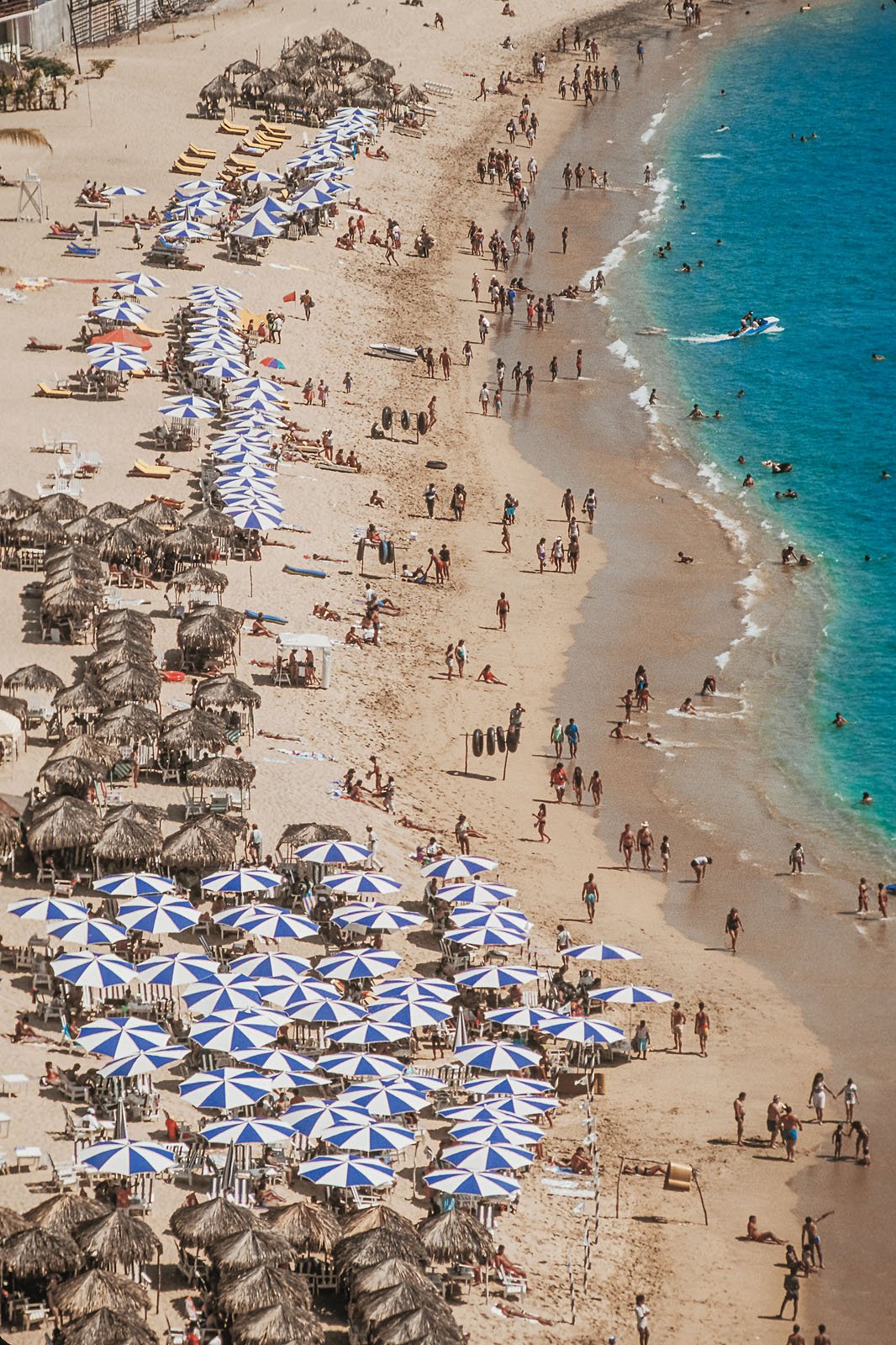














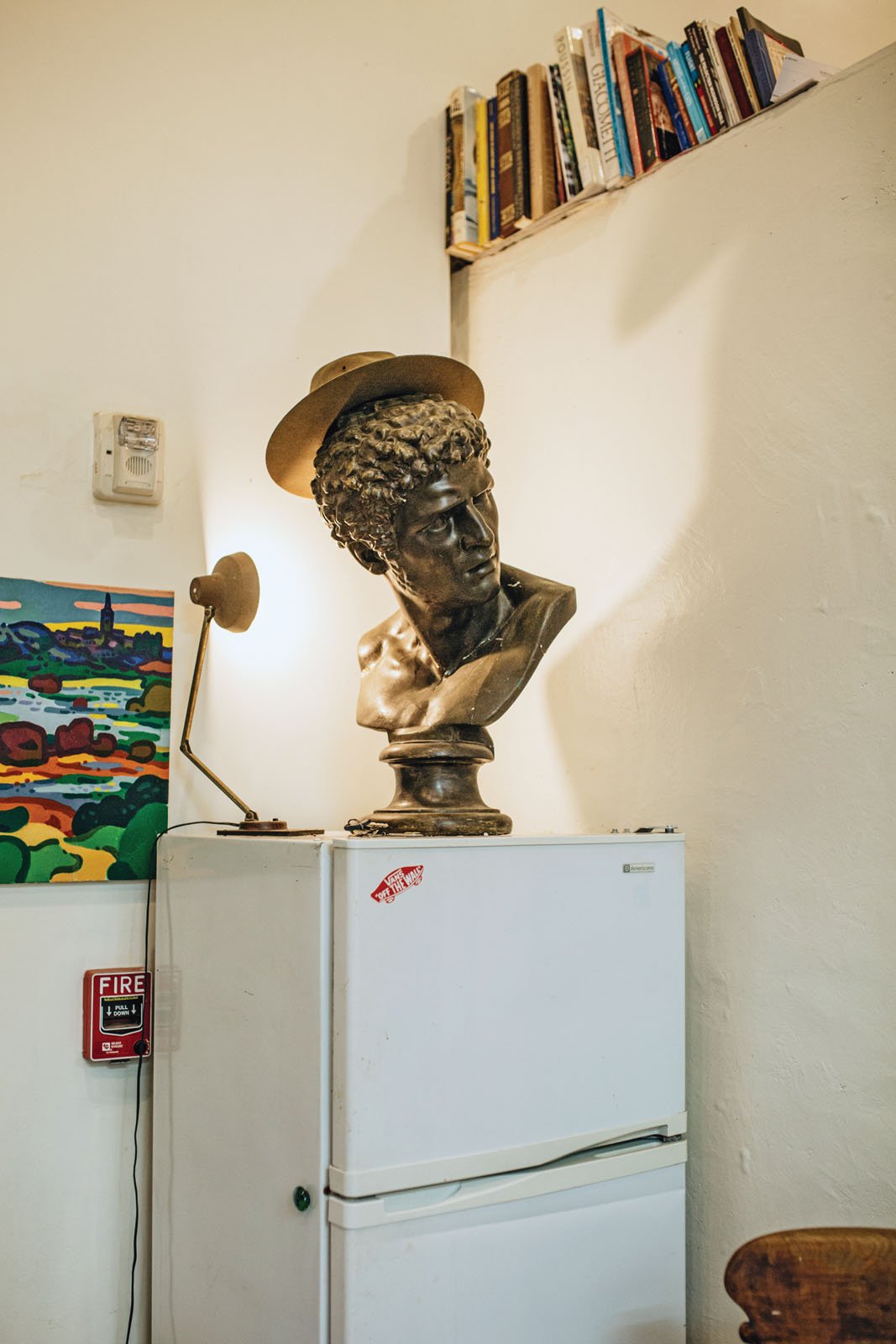
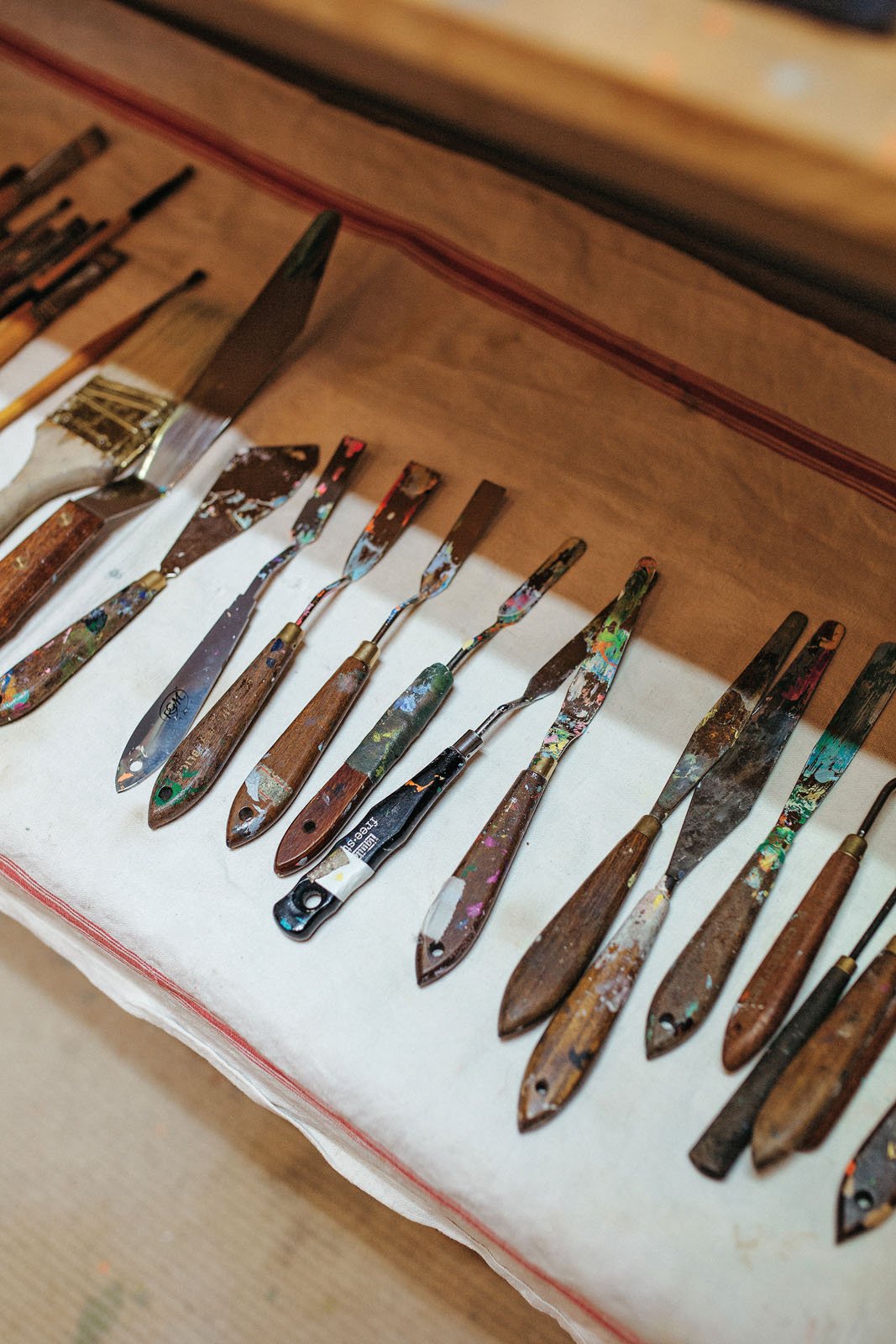
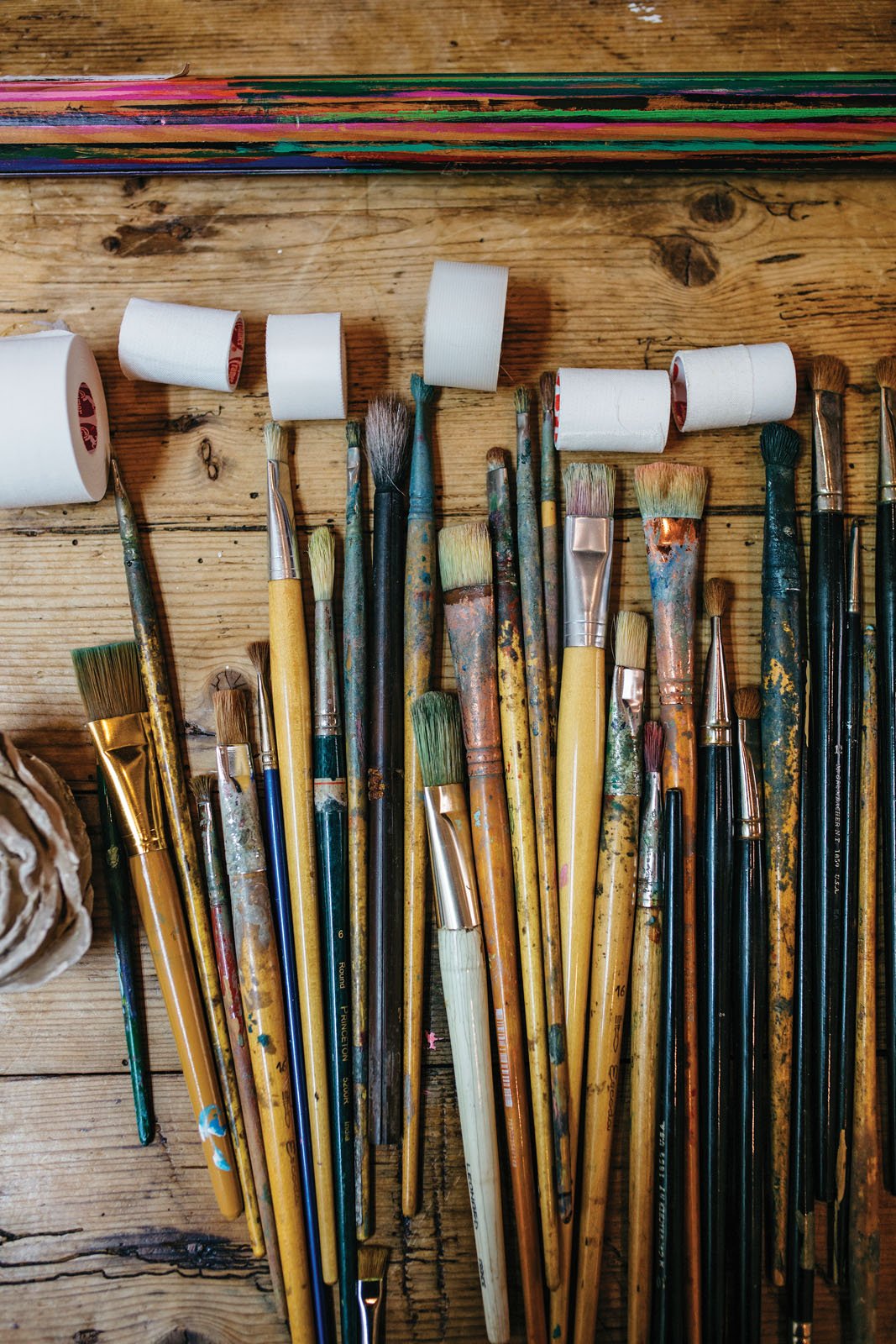
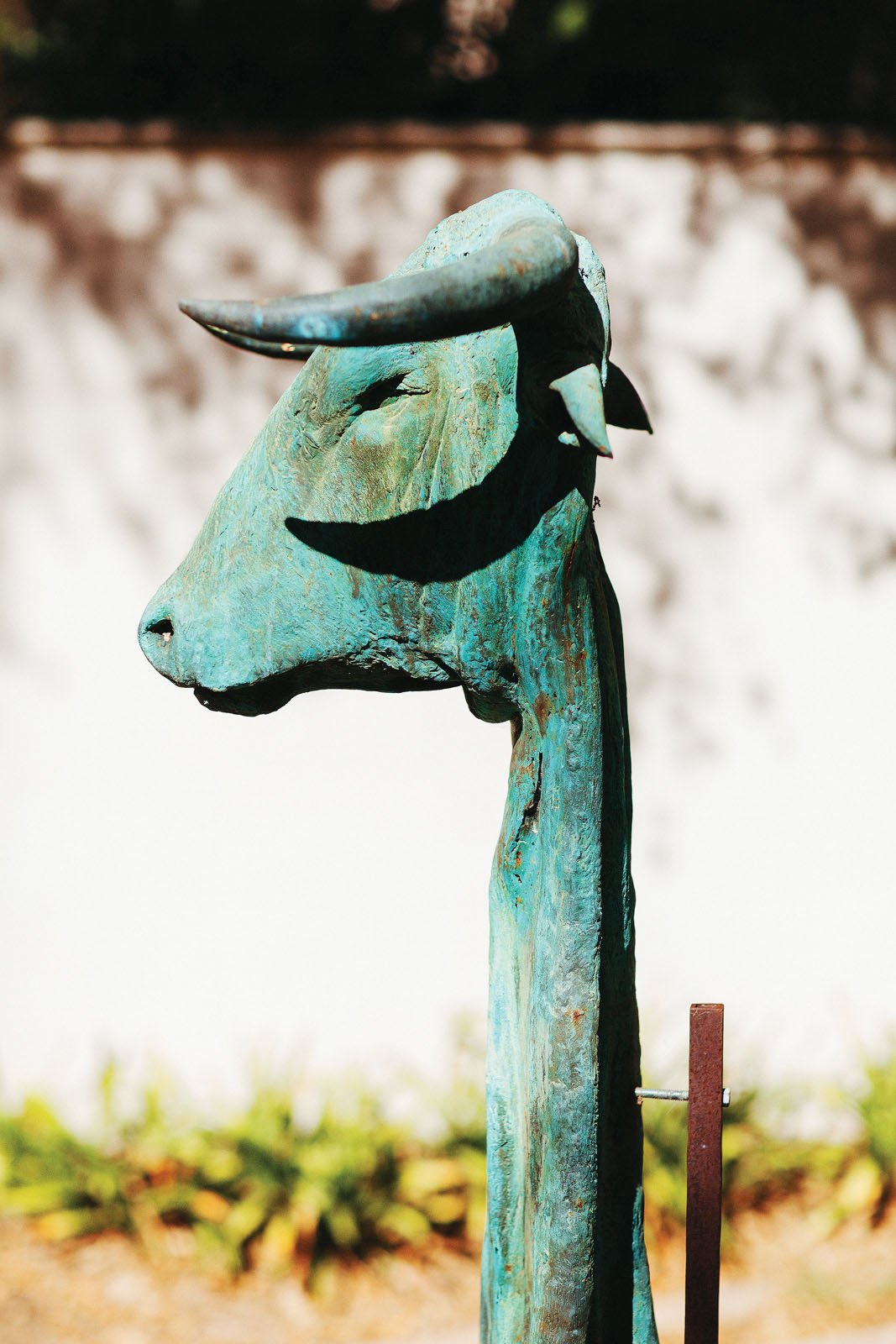






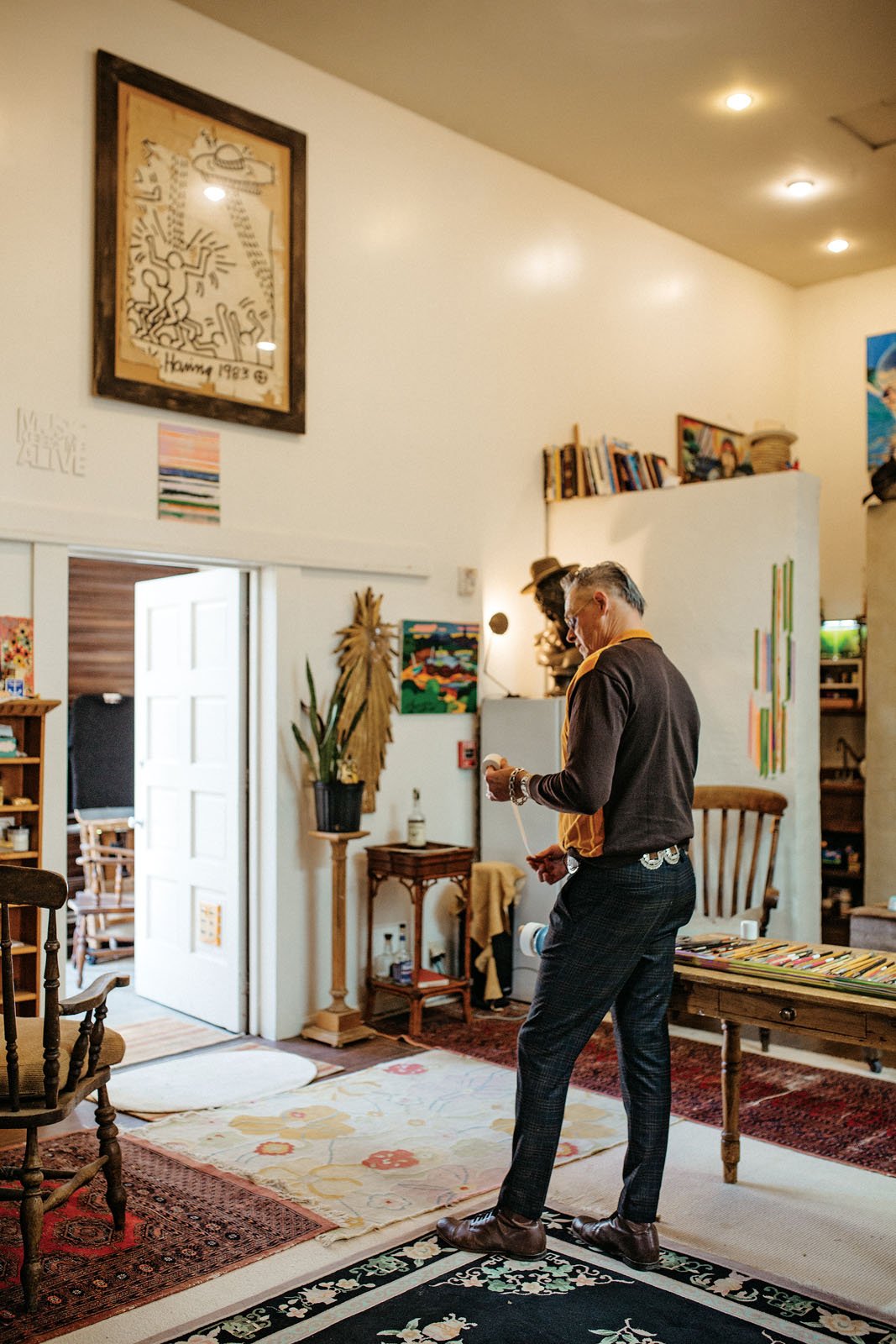


![Despite the fact that Reed has a fine jewelry company, she insists she is “not really a luxury gal, [though] the irony is not lost on me.](https://images.squarespace-cdn.com/content/v1/5ffbf71557f982023c822b7b/1654913947249-HTS2BYBYNBZY0ZVH8UPR/Nikki_04_869.jpg)
